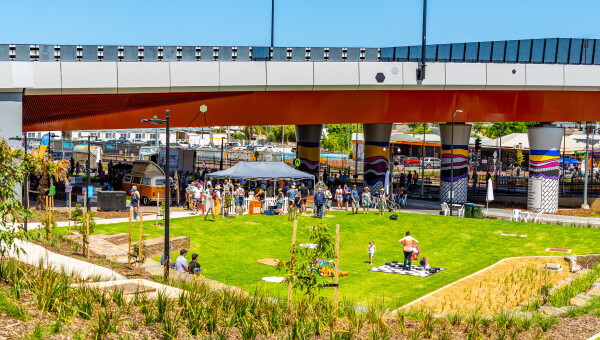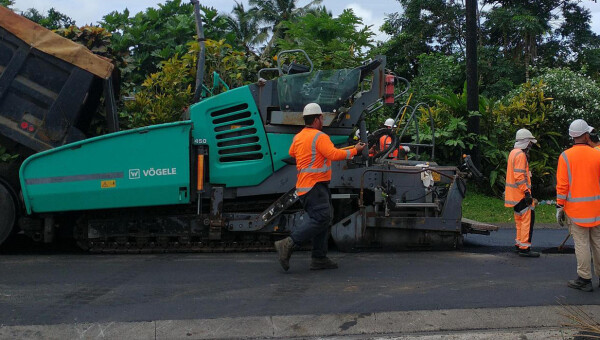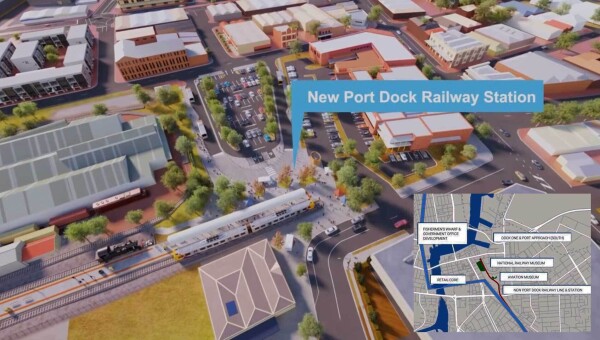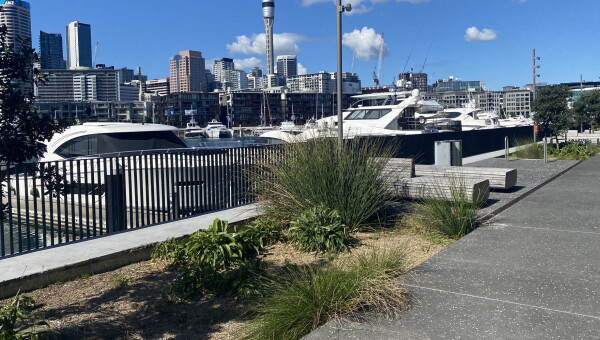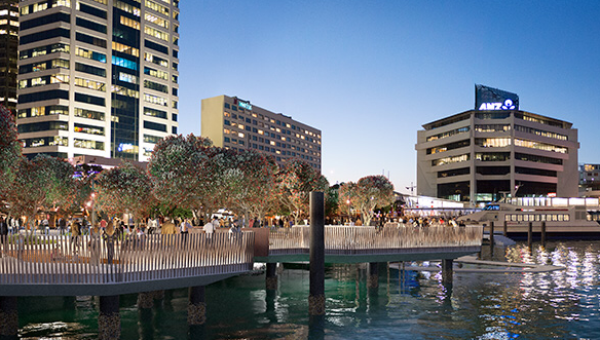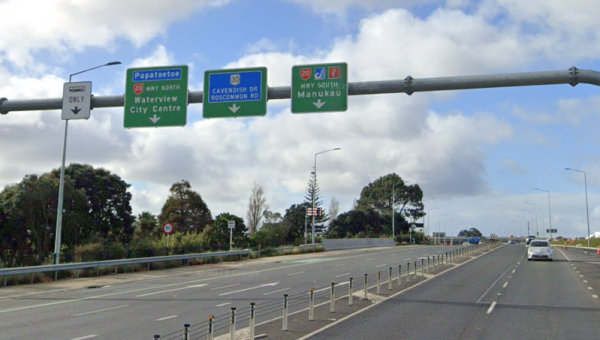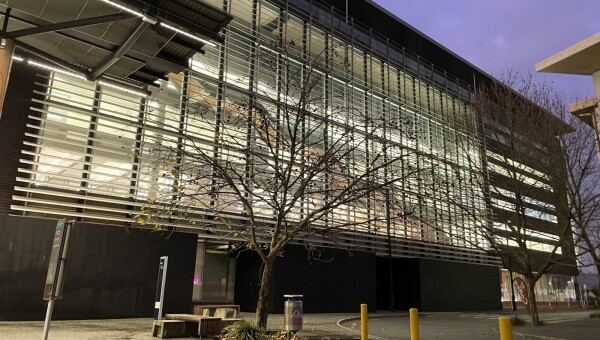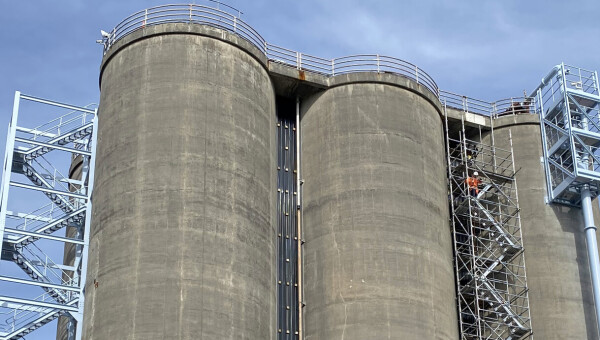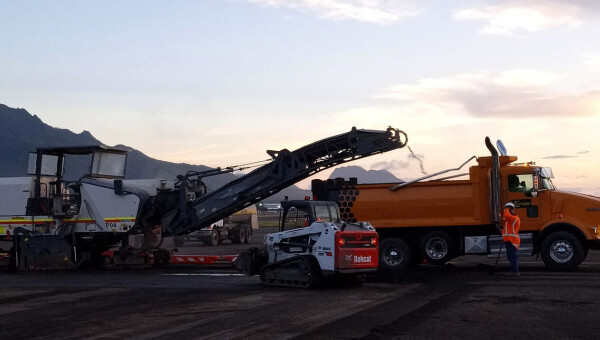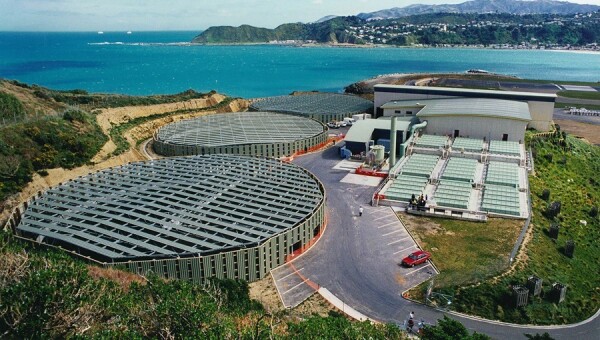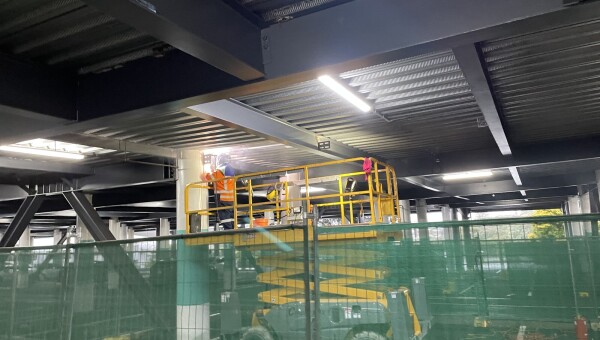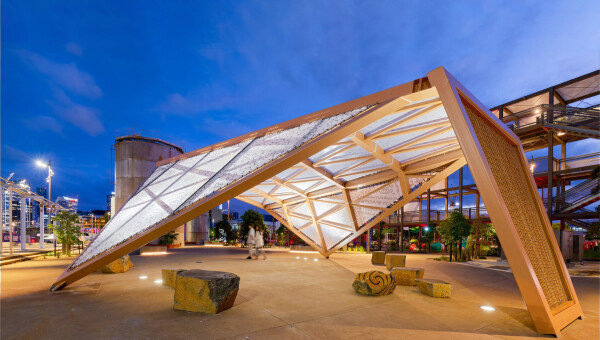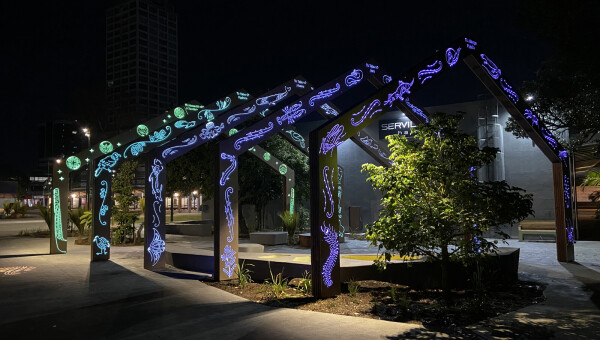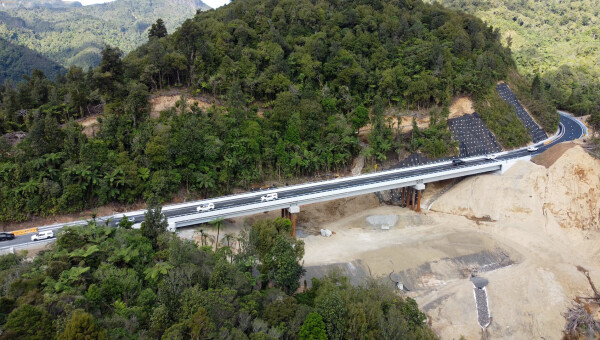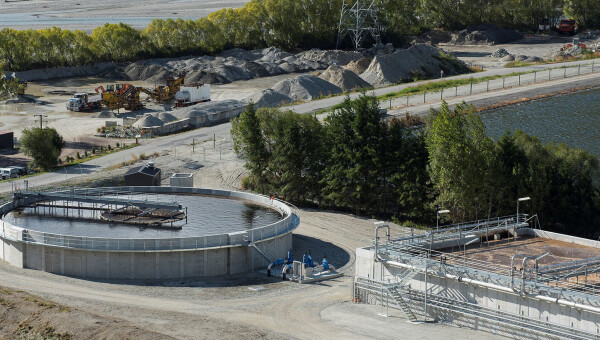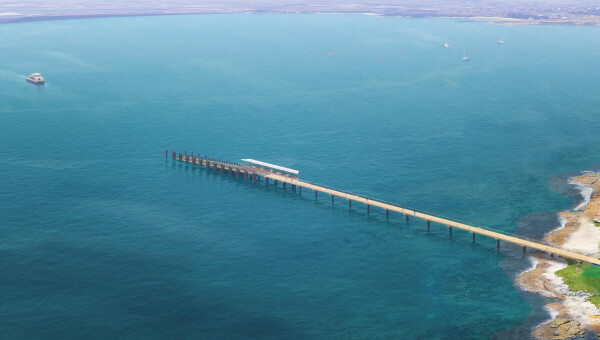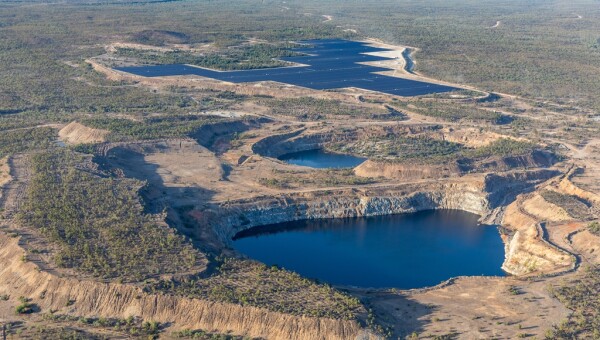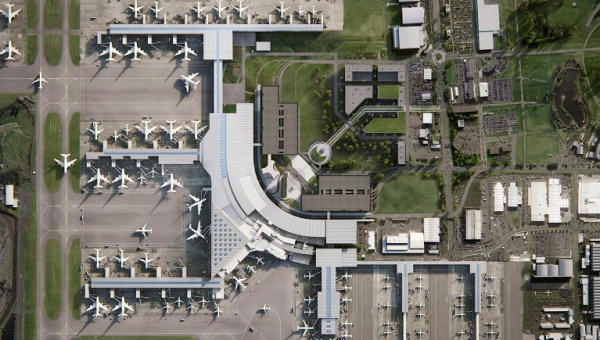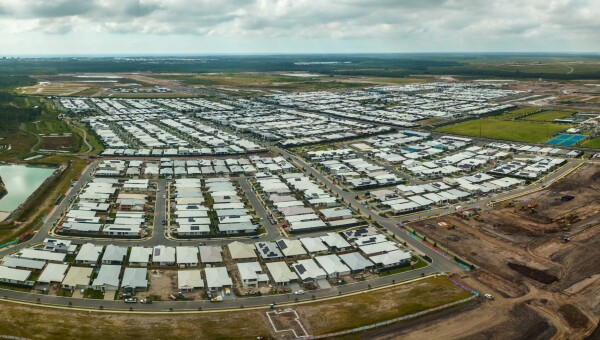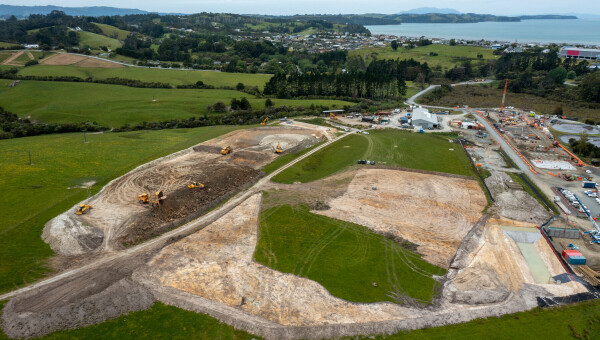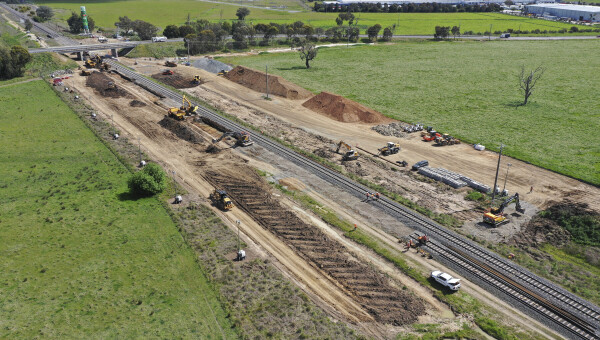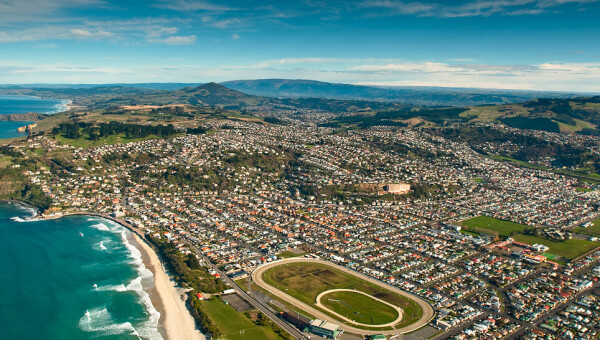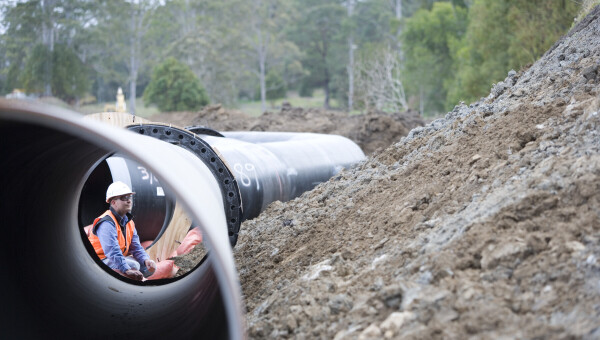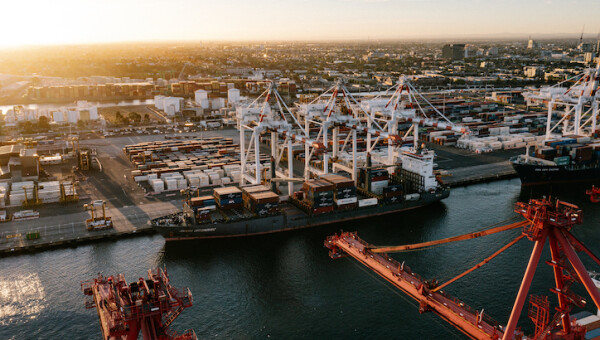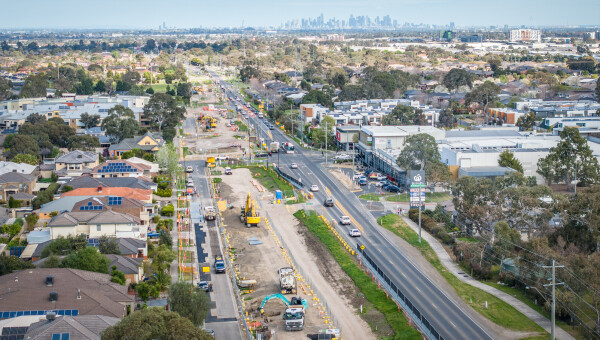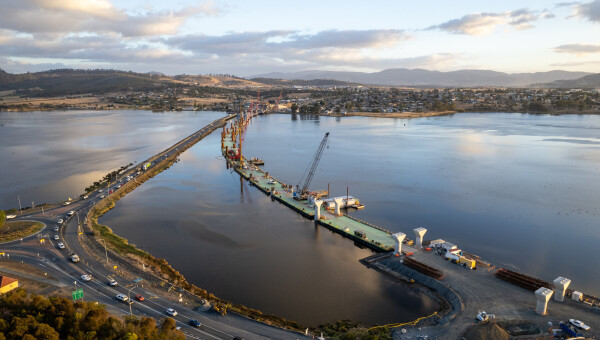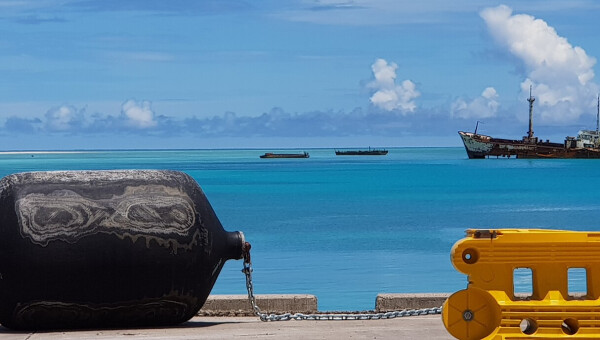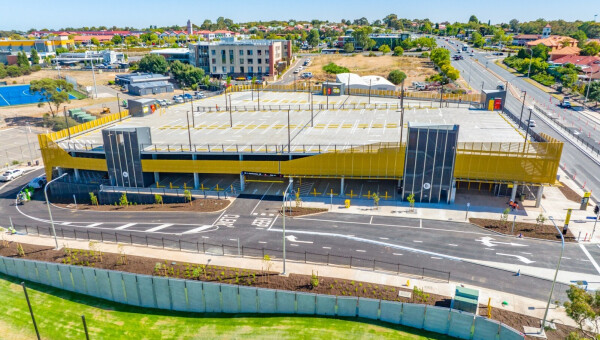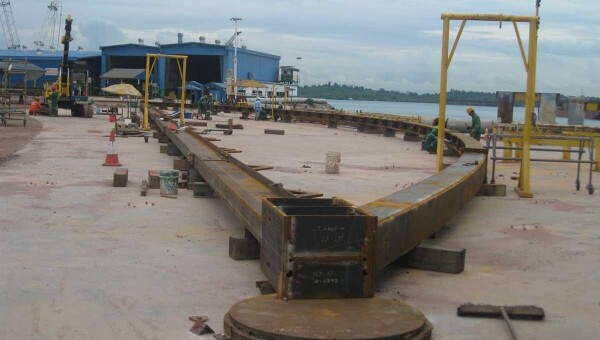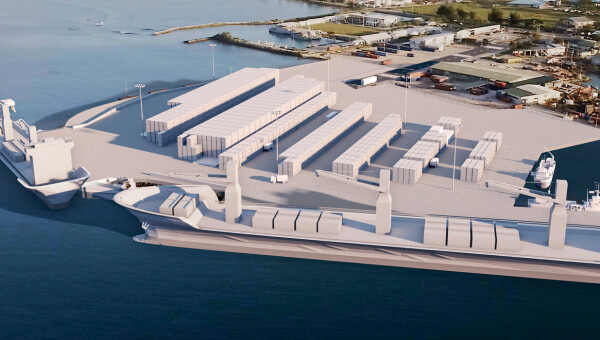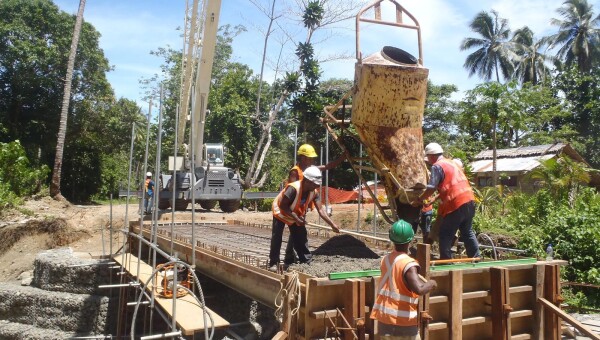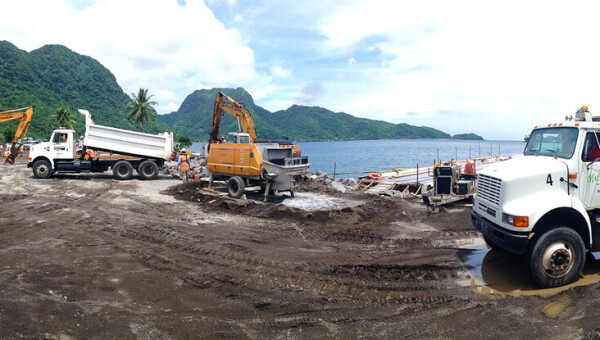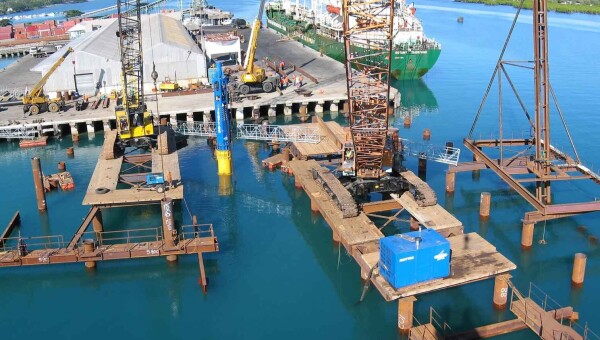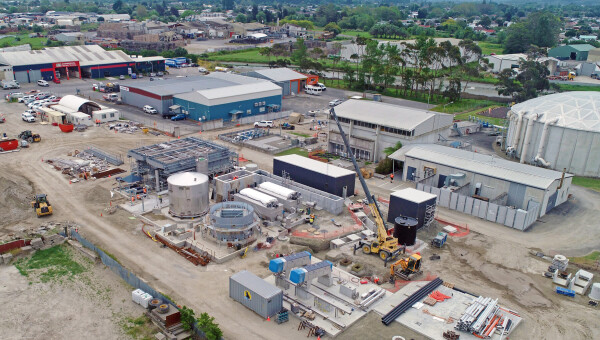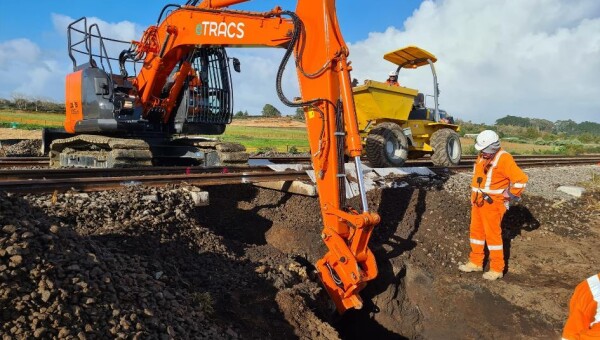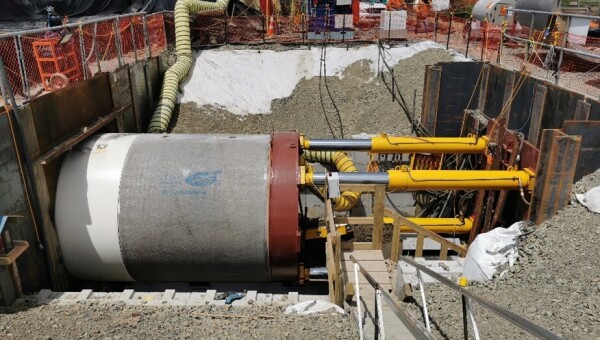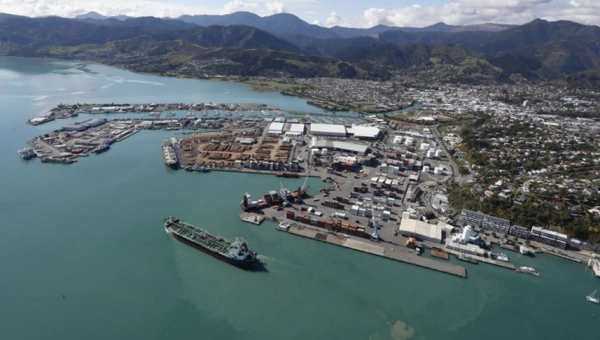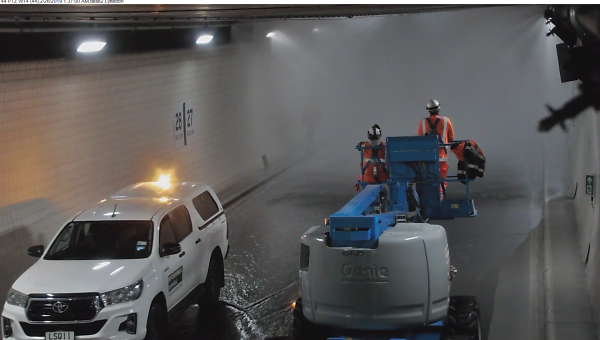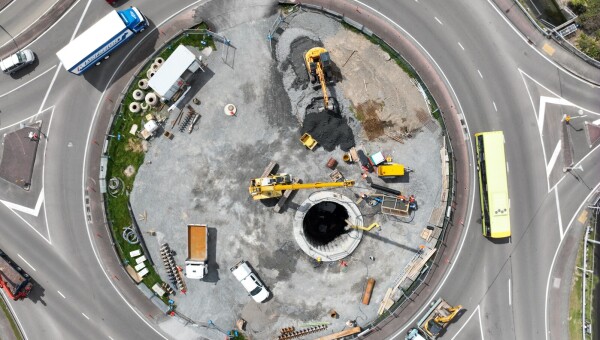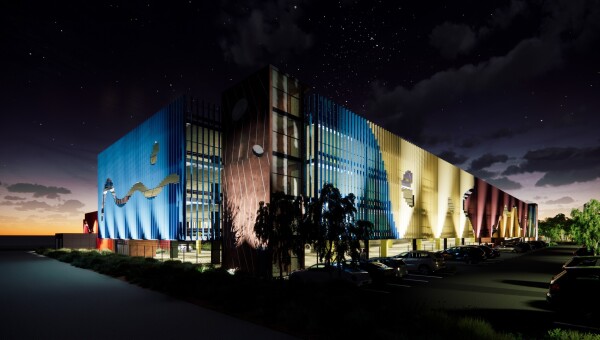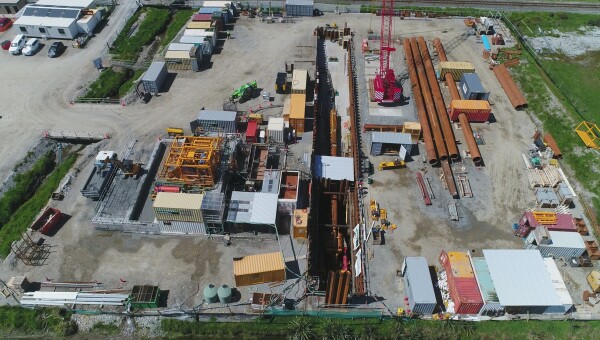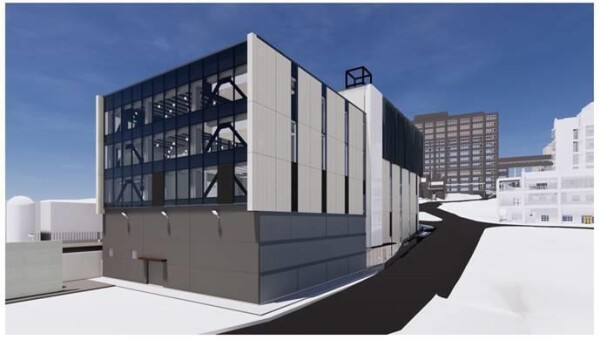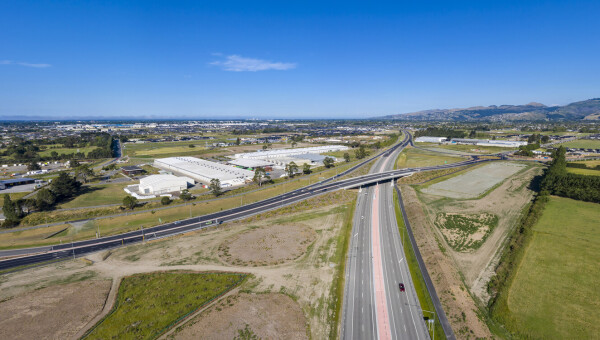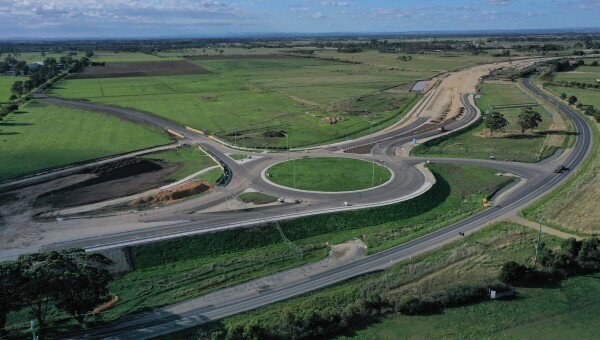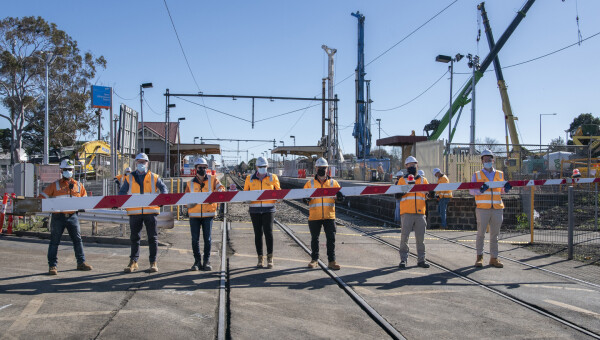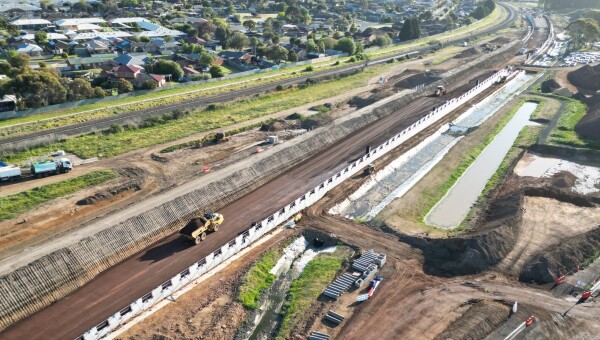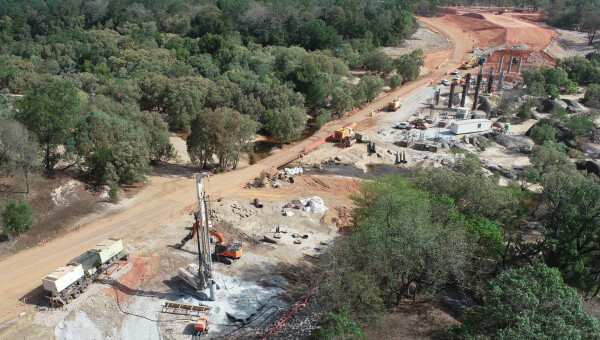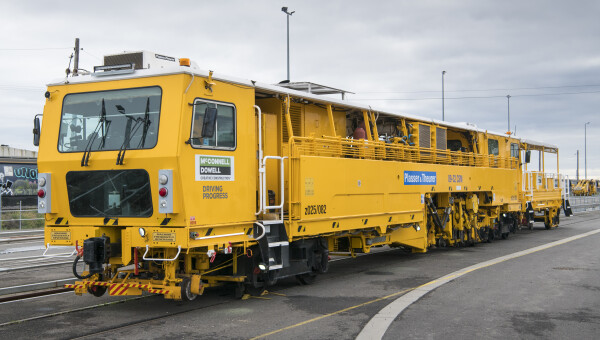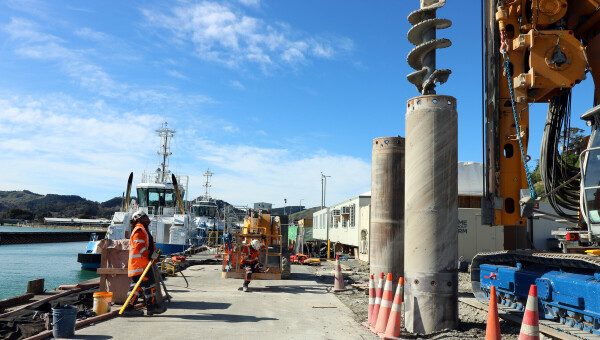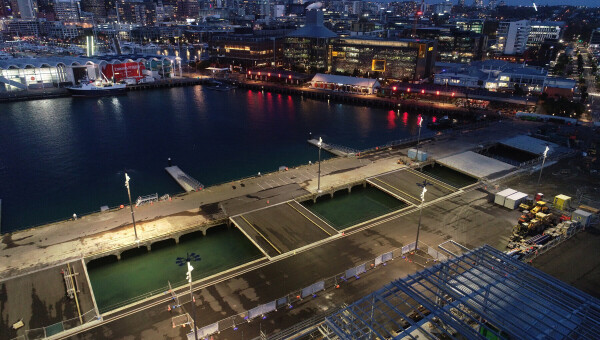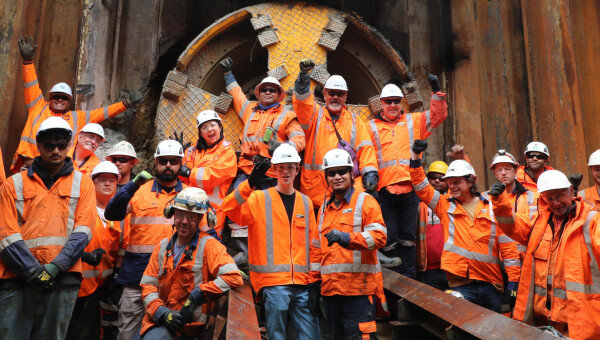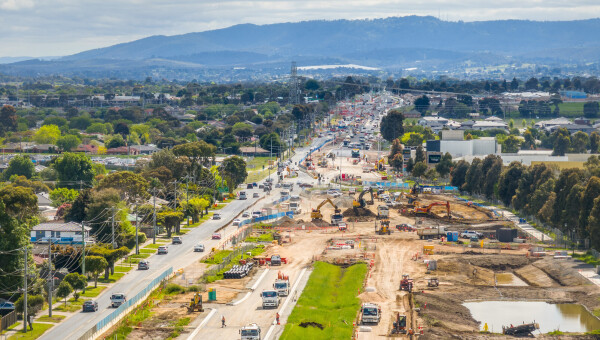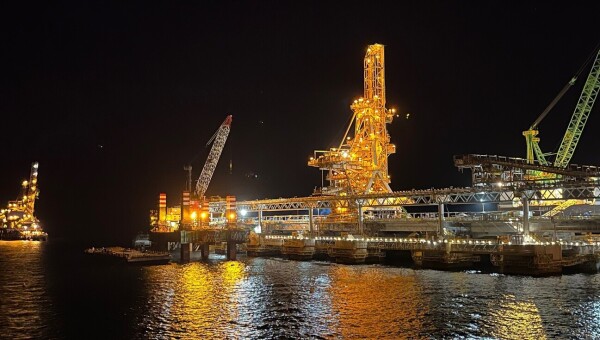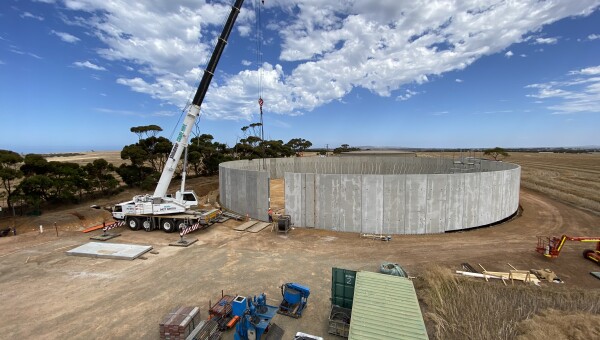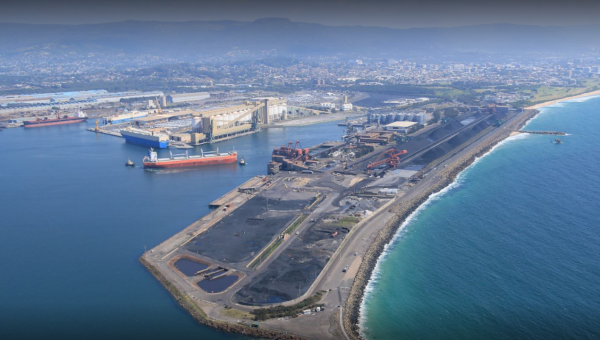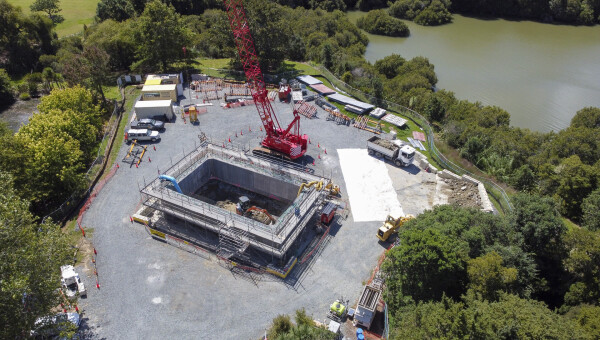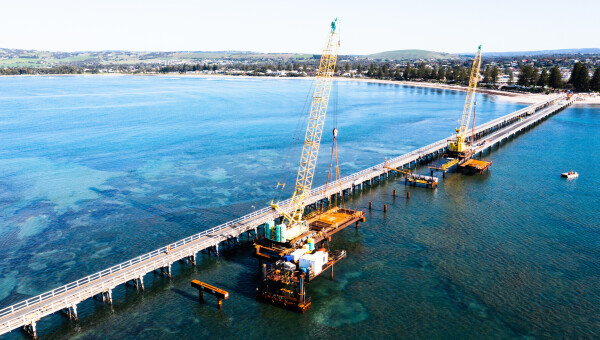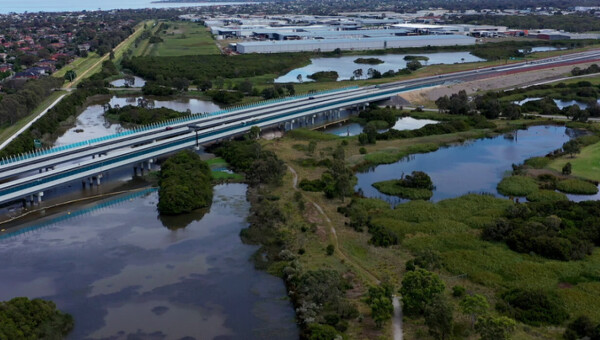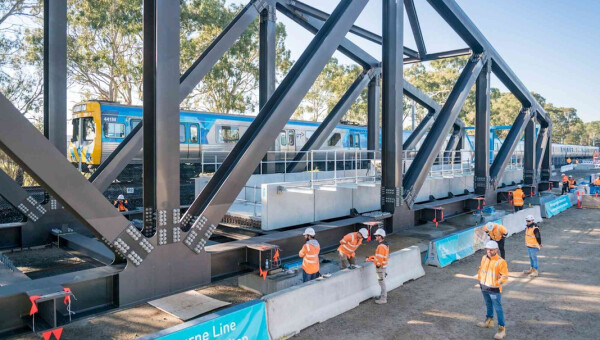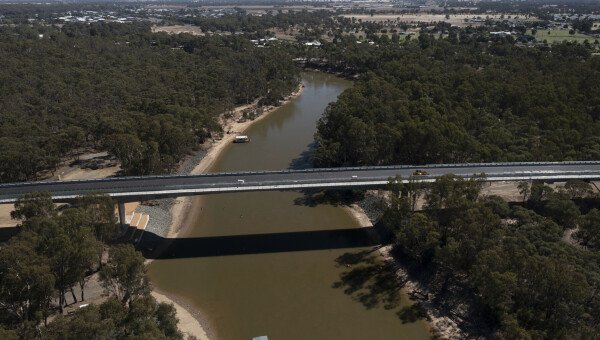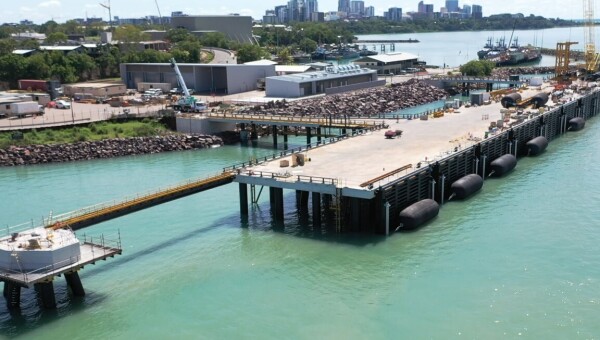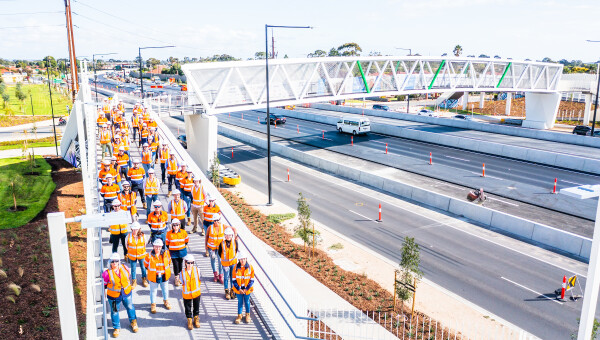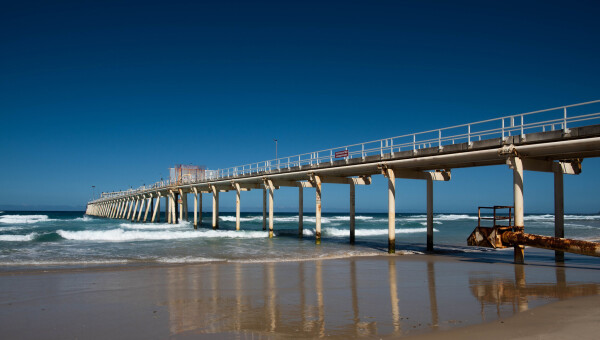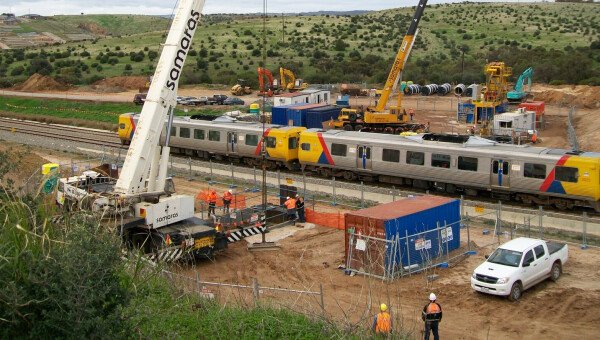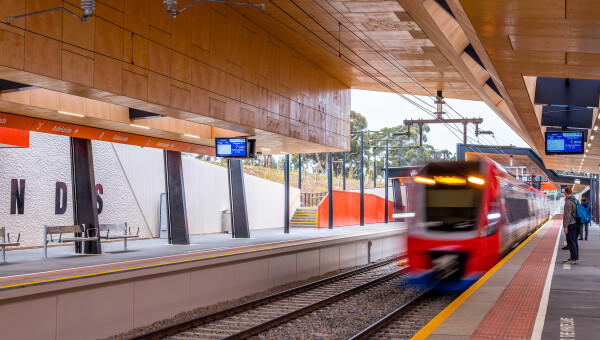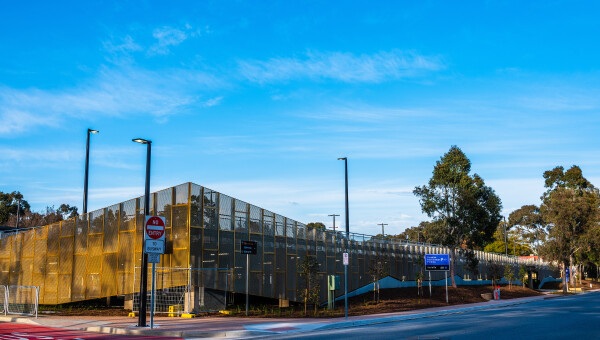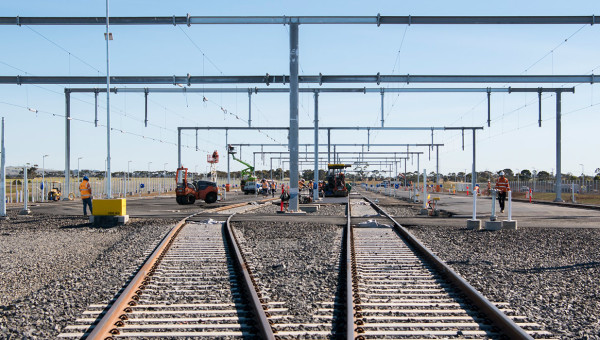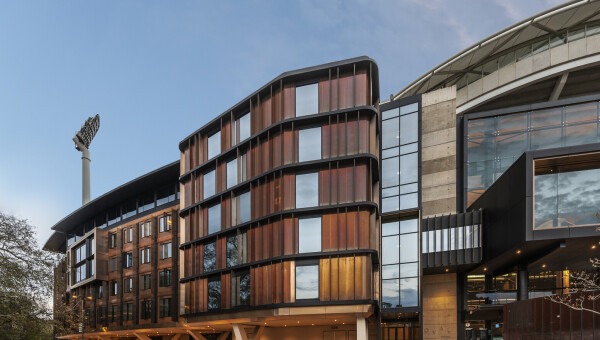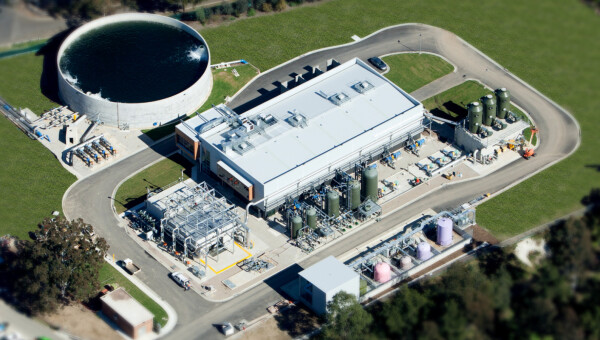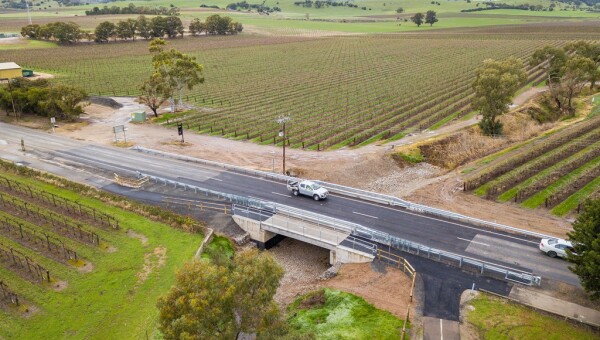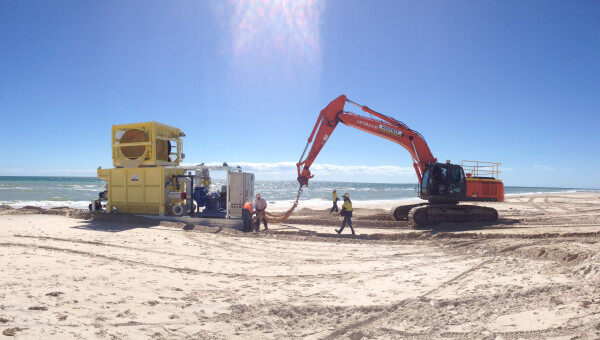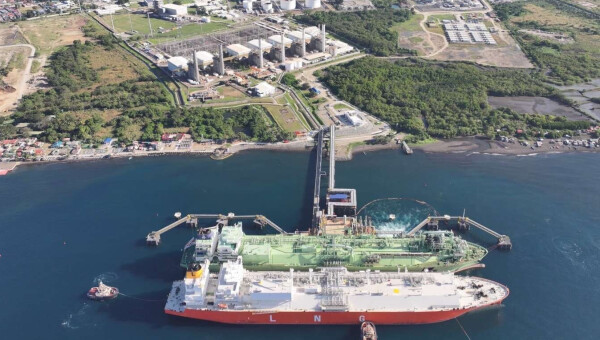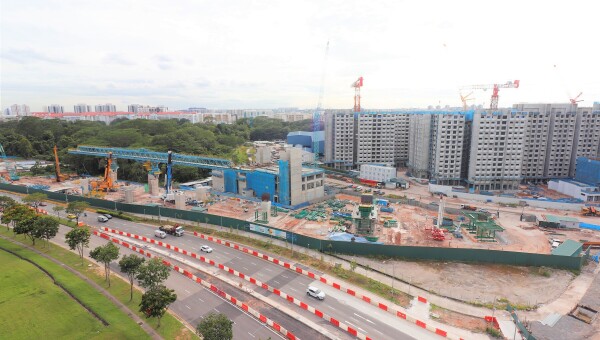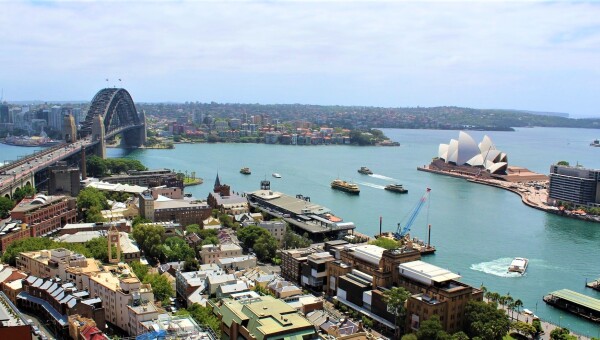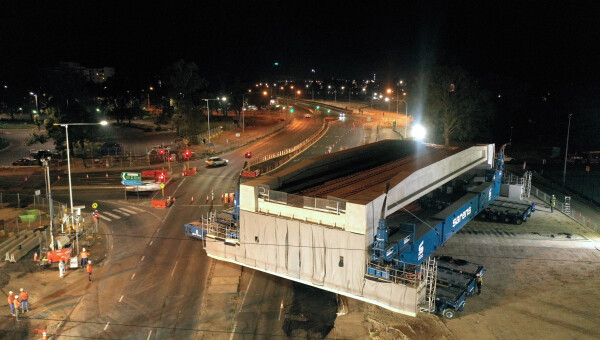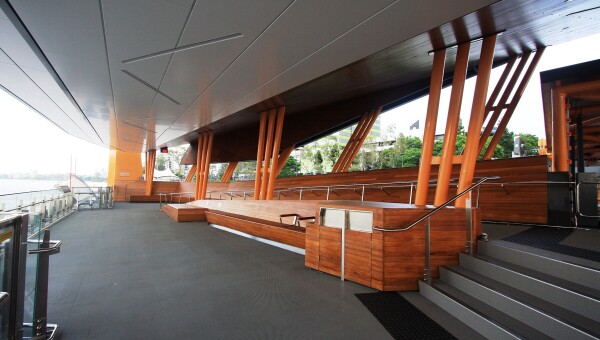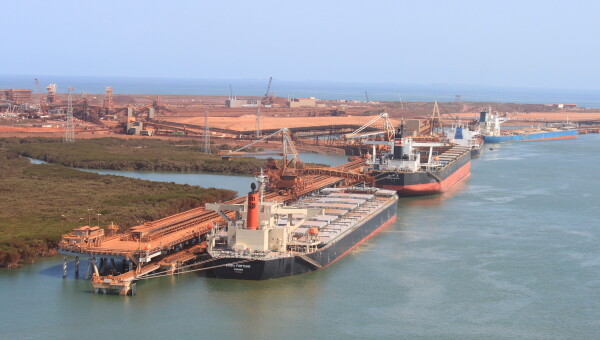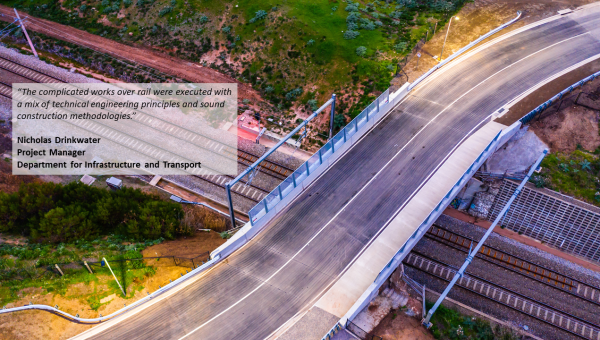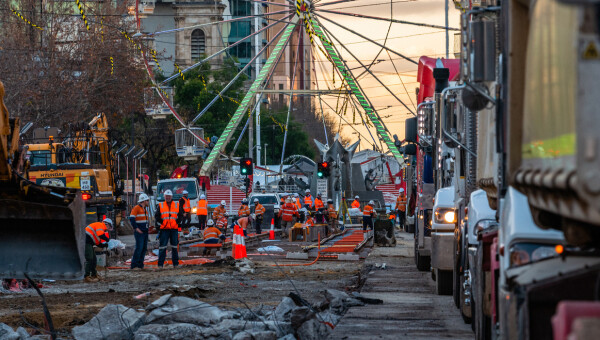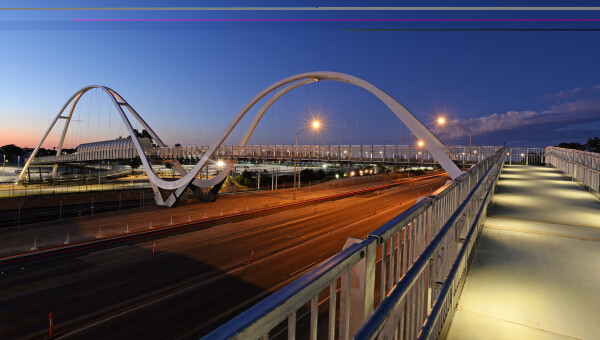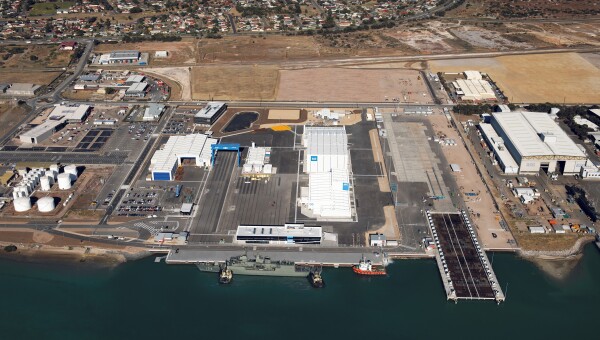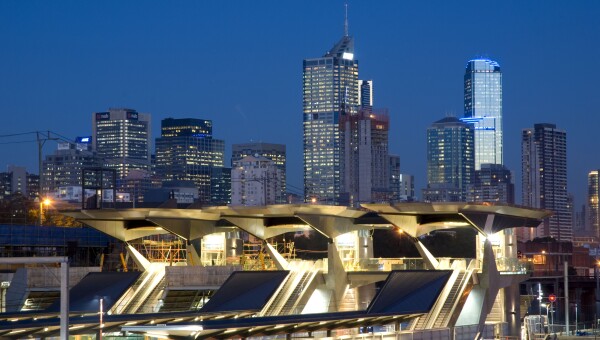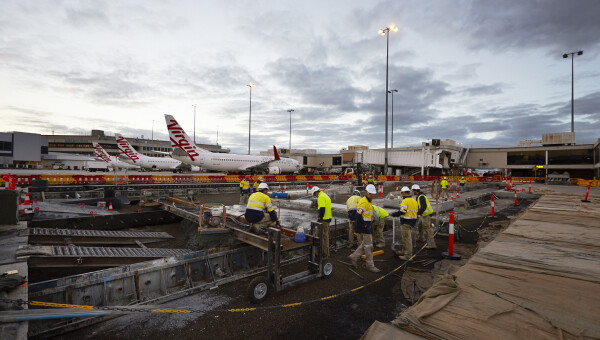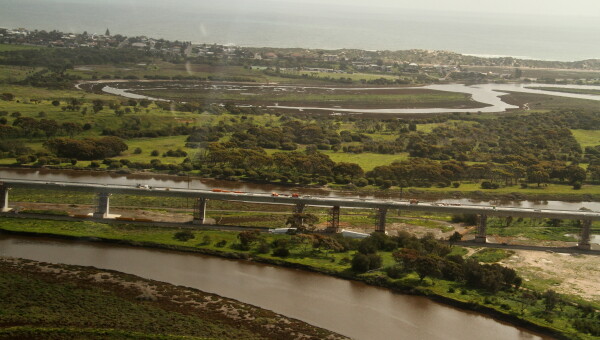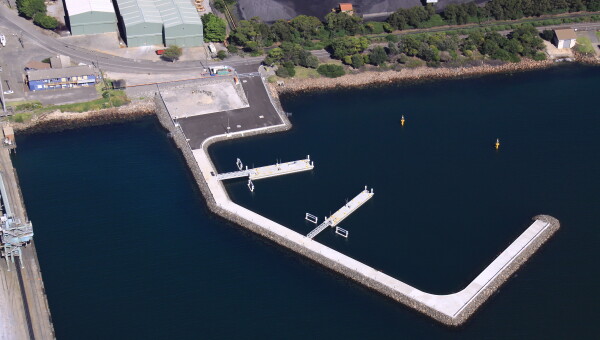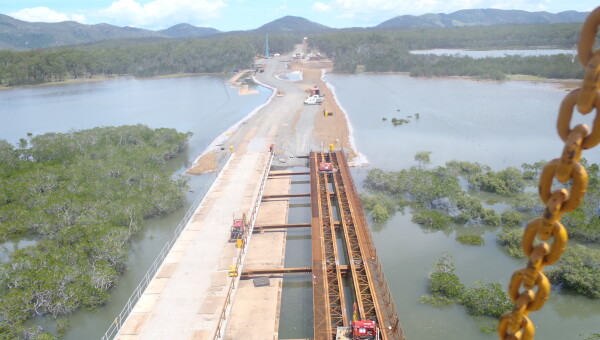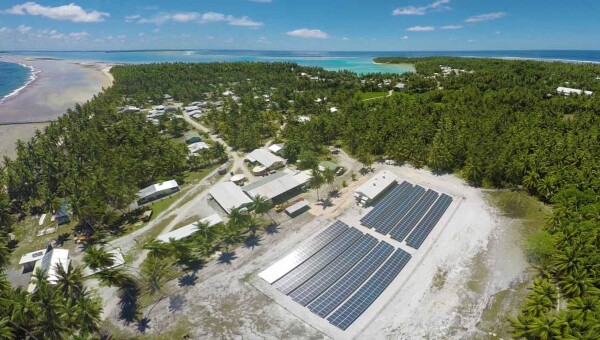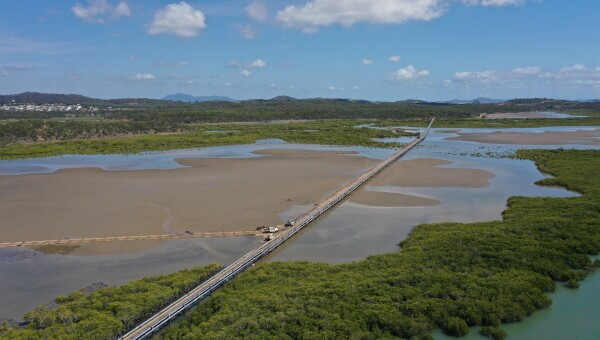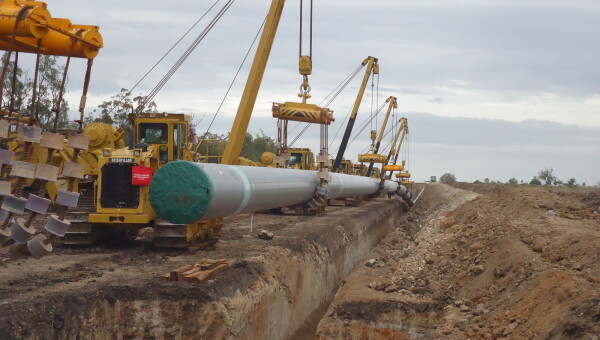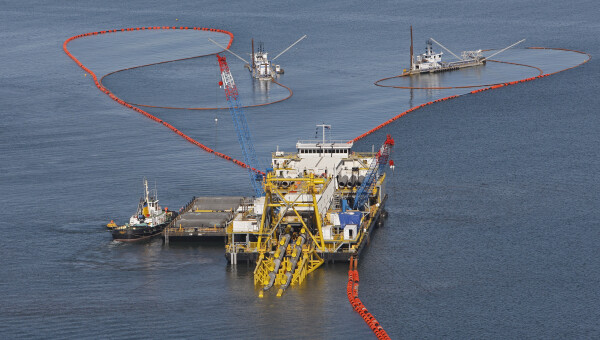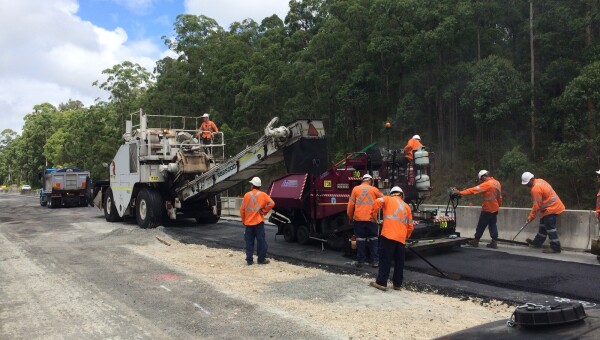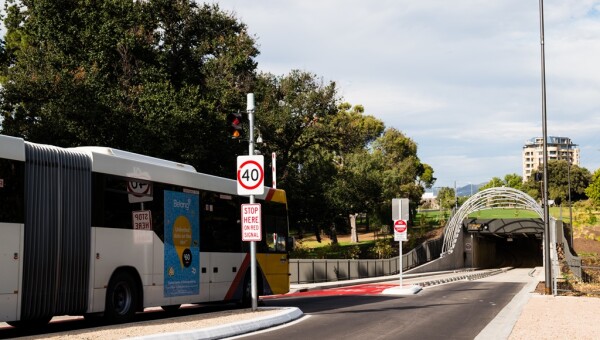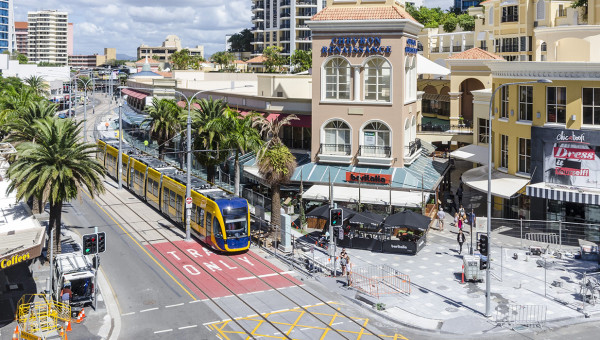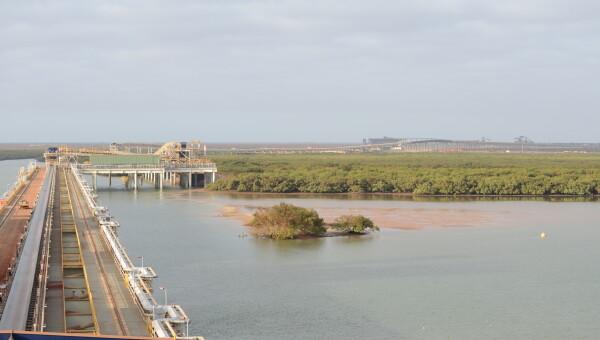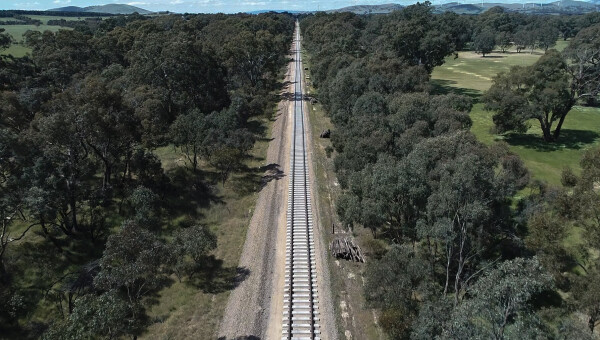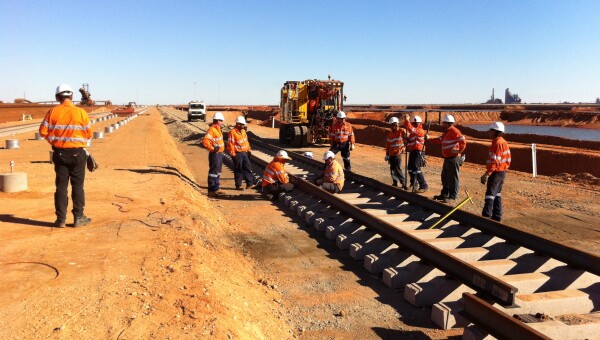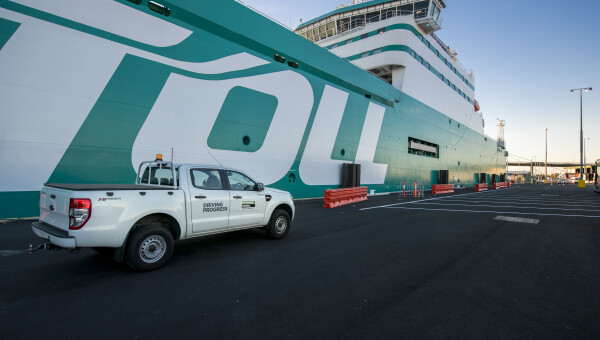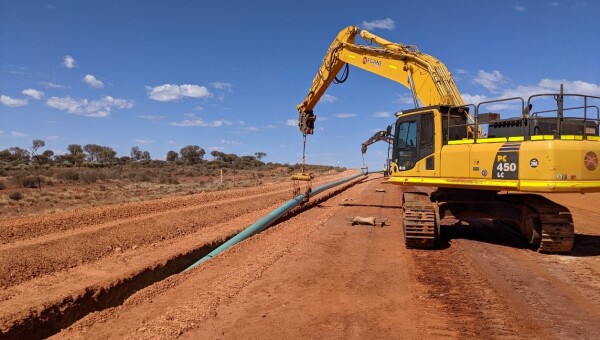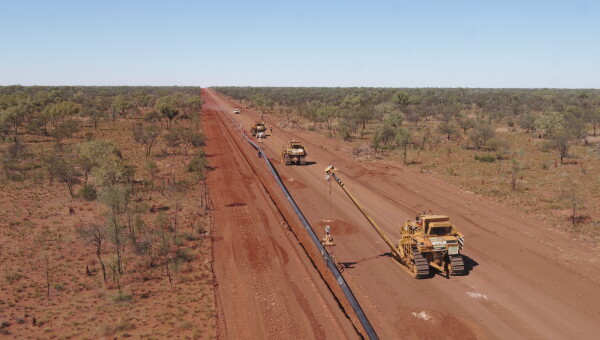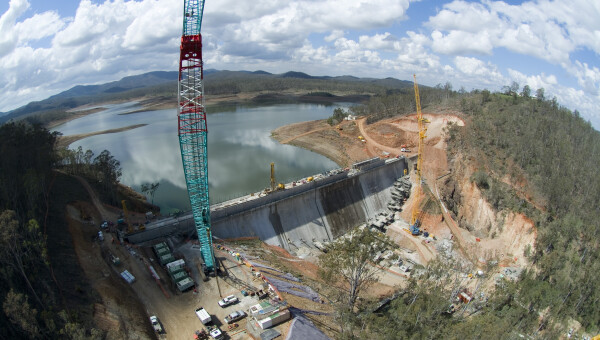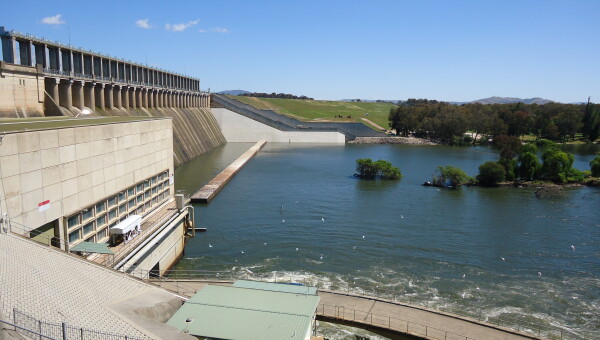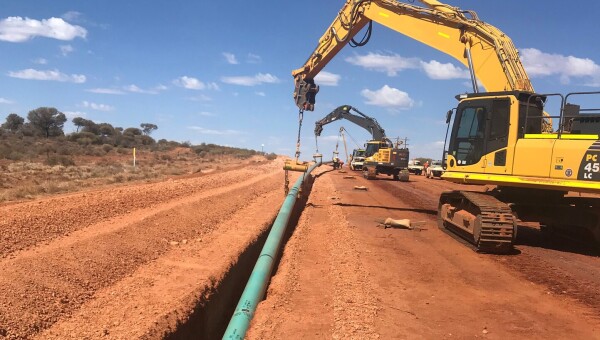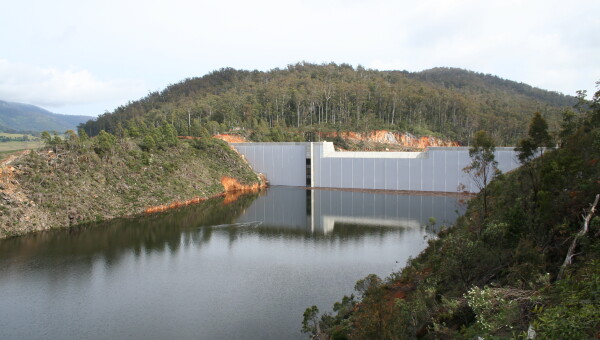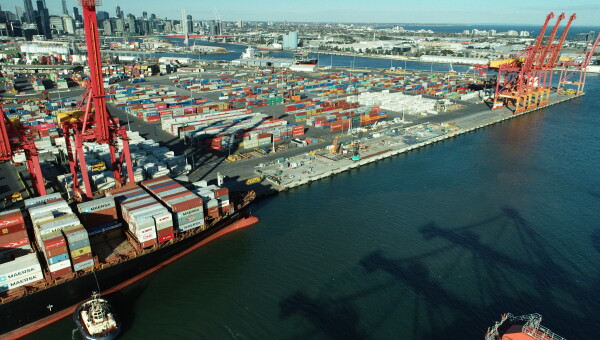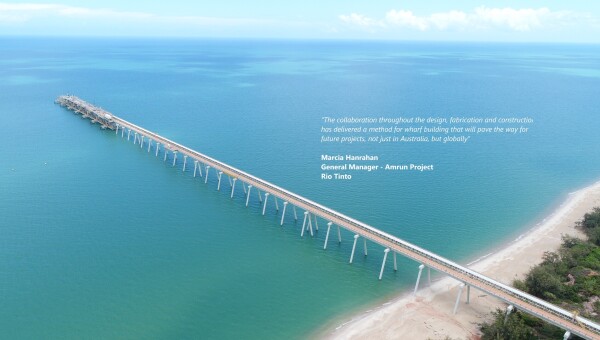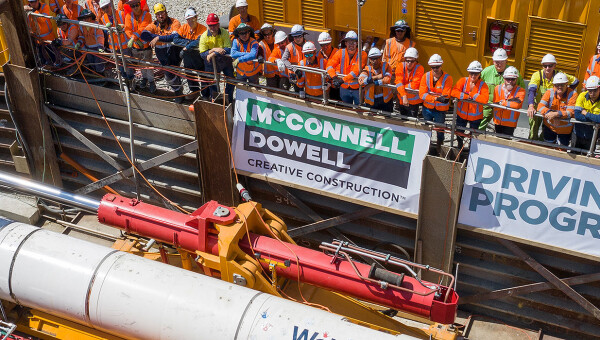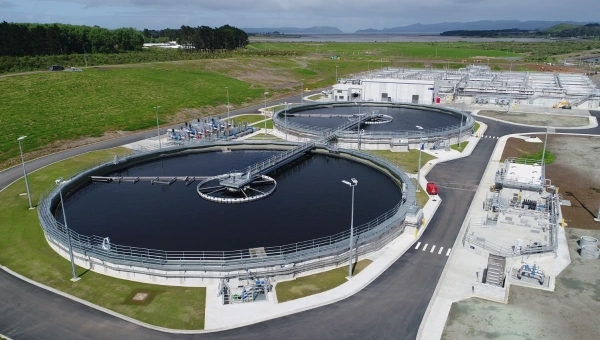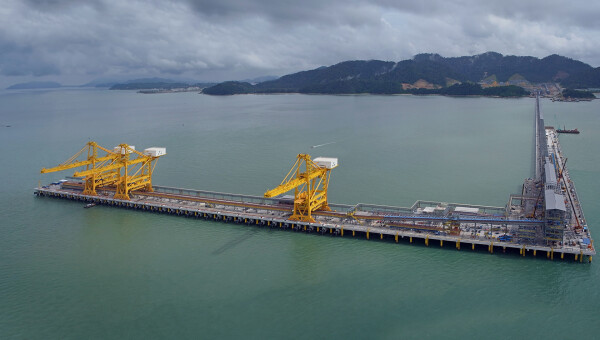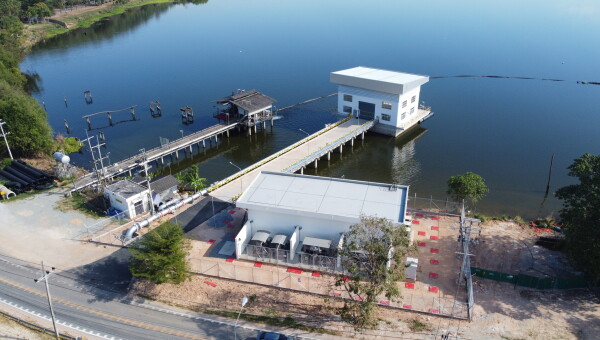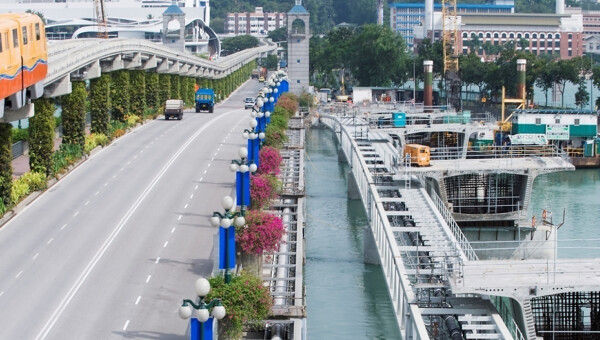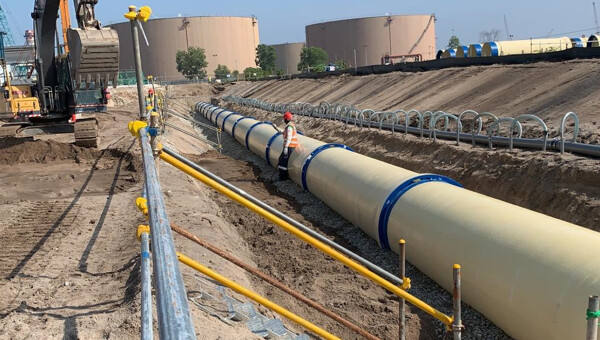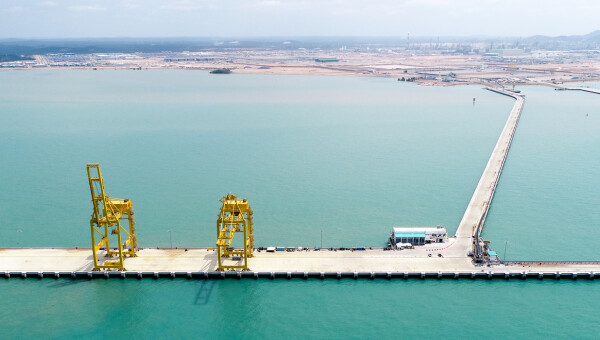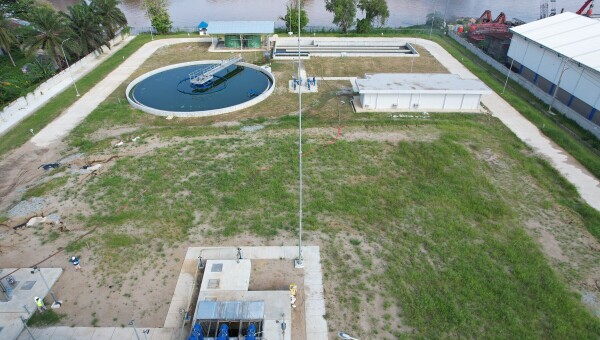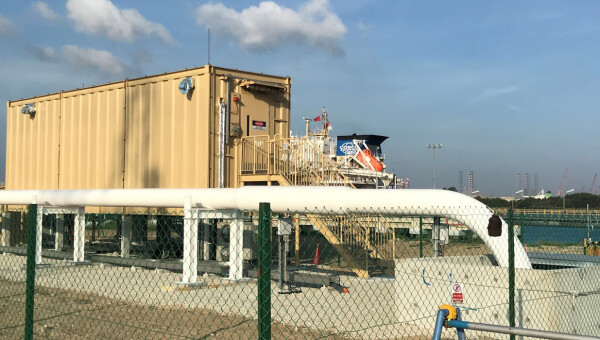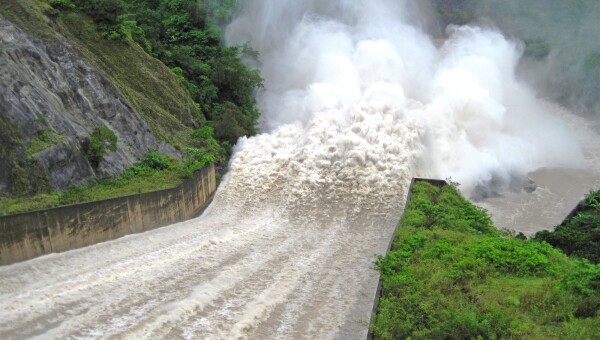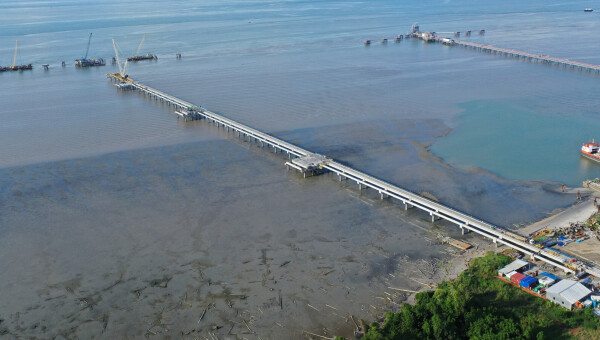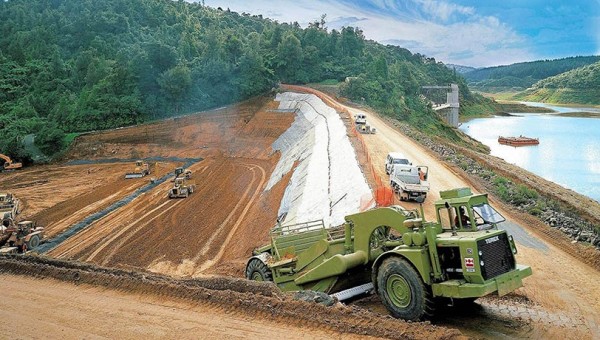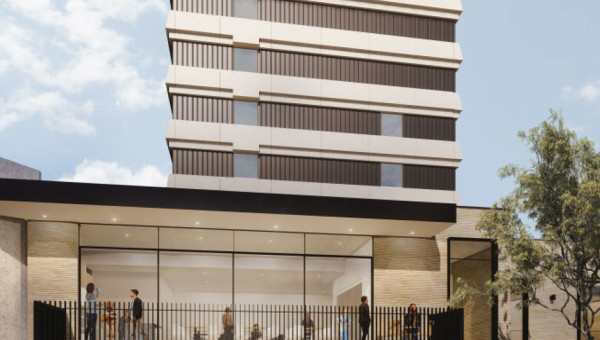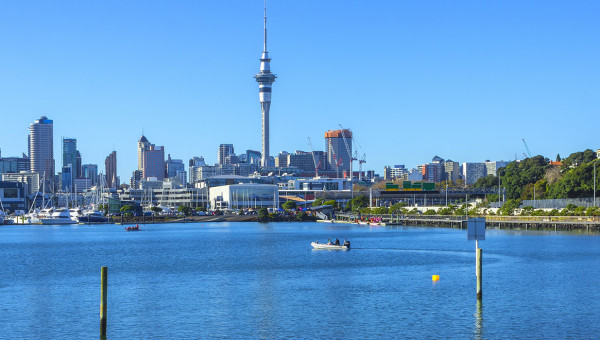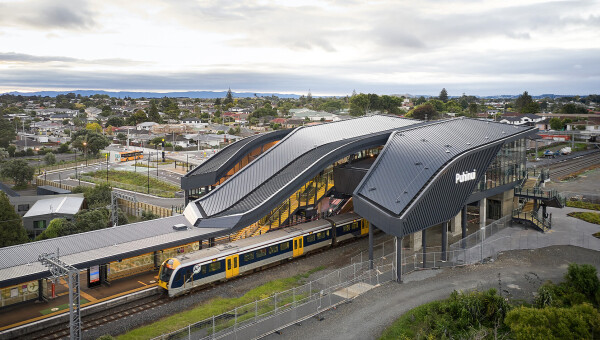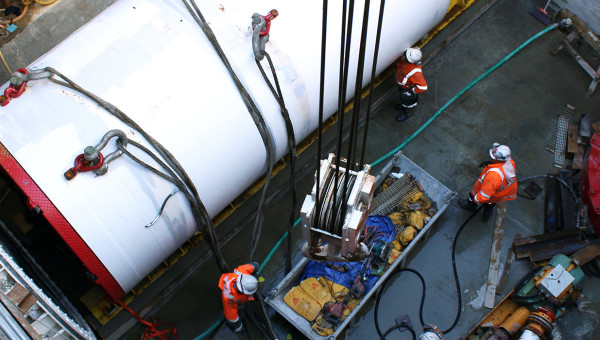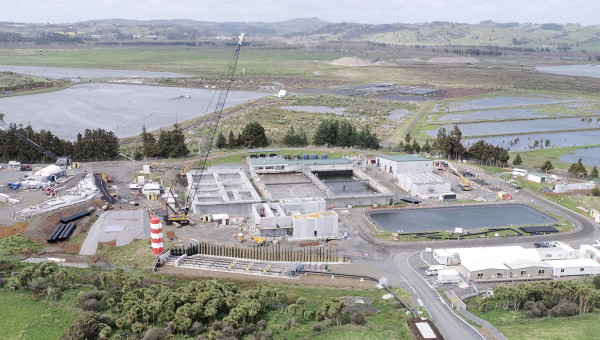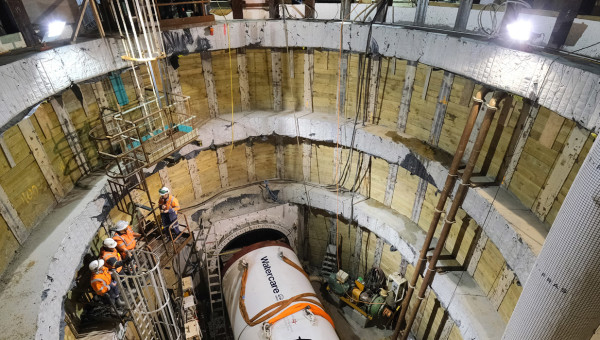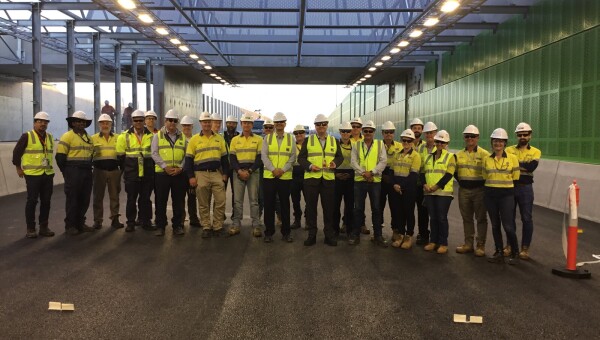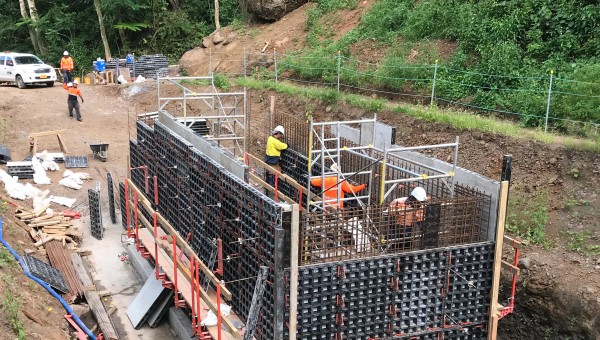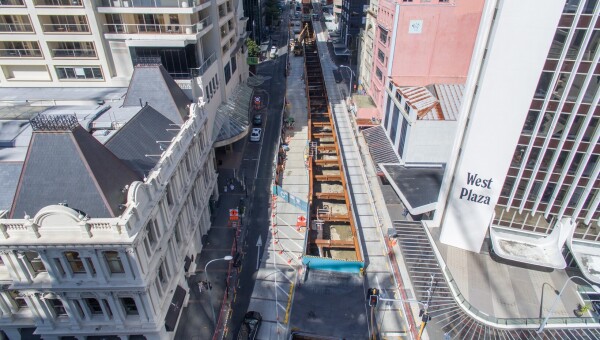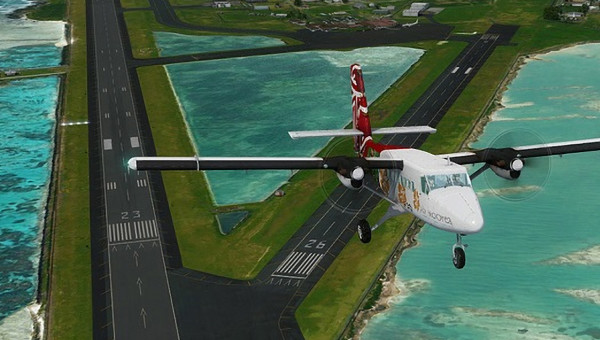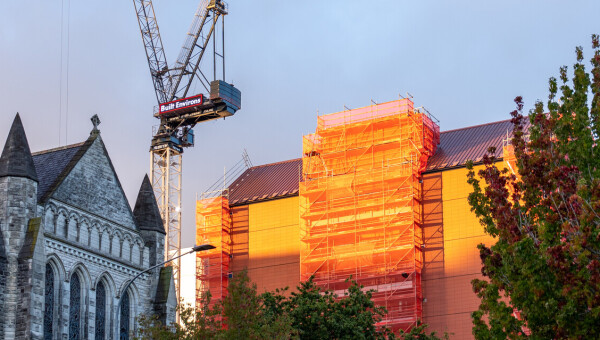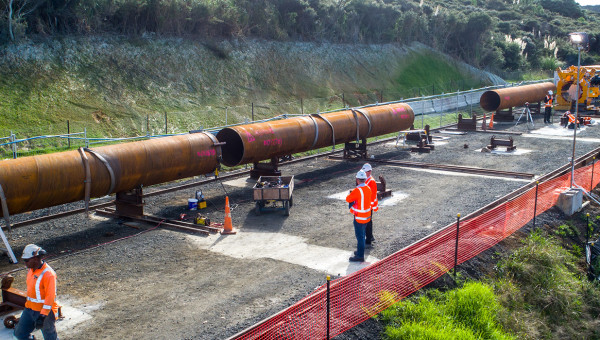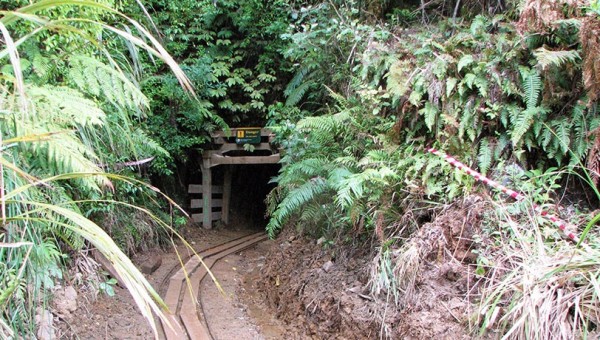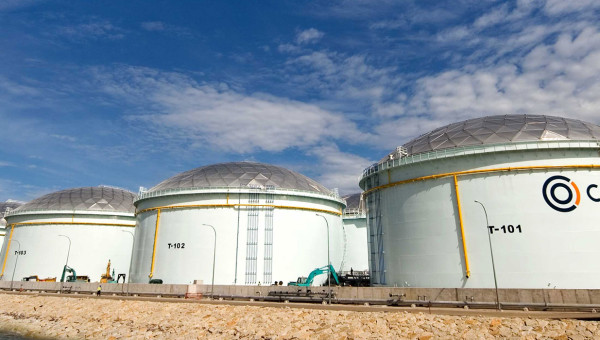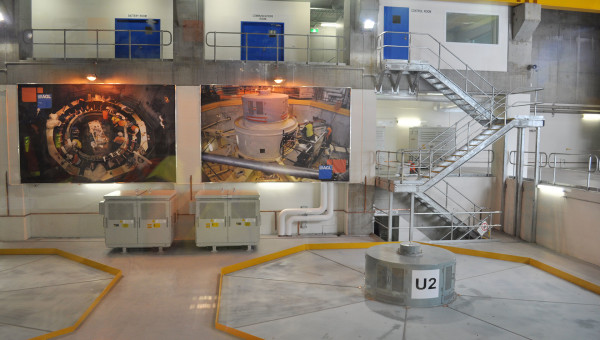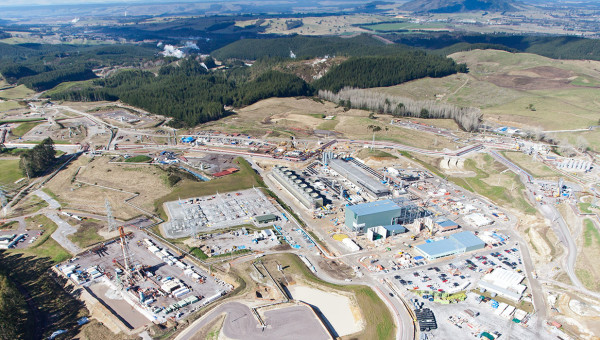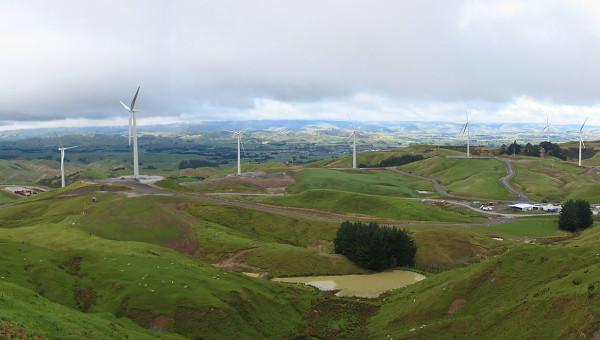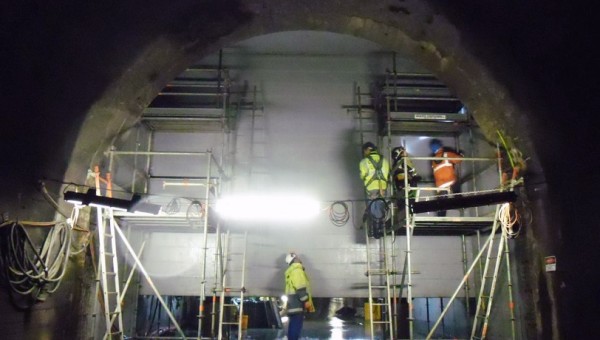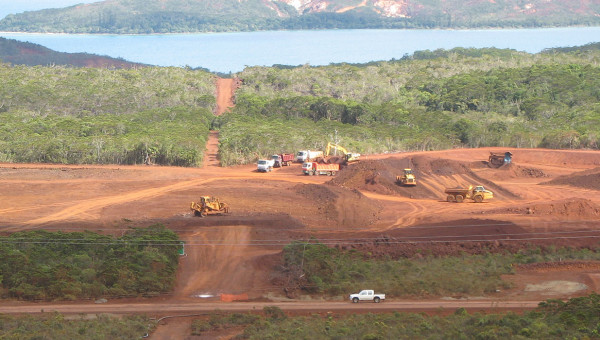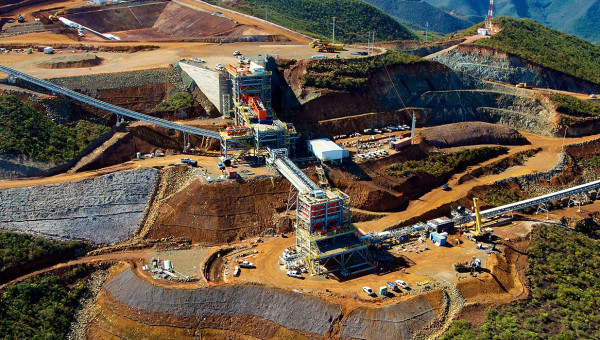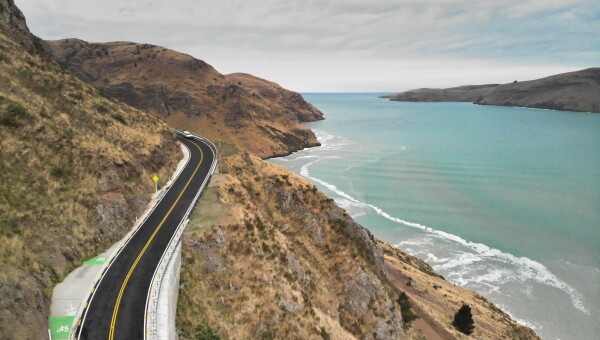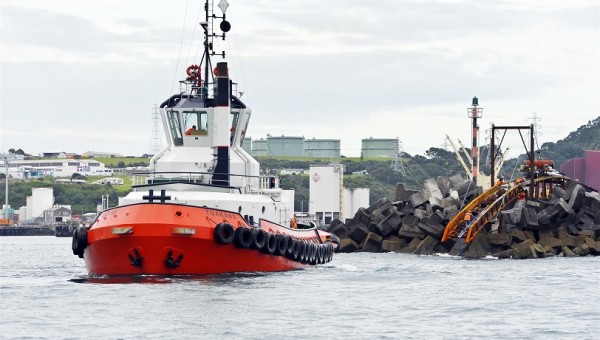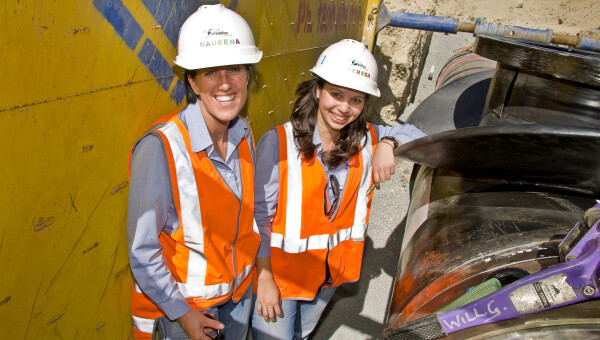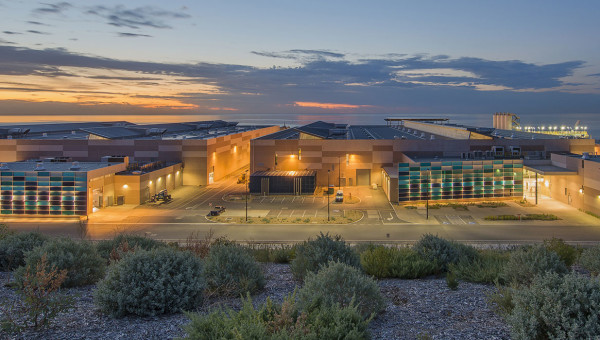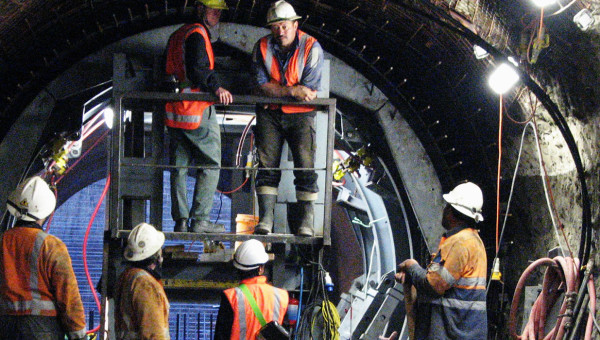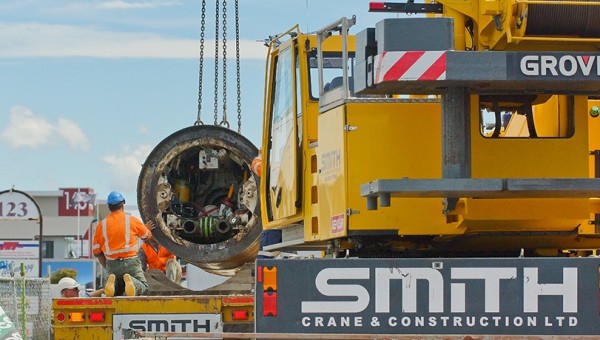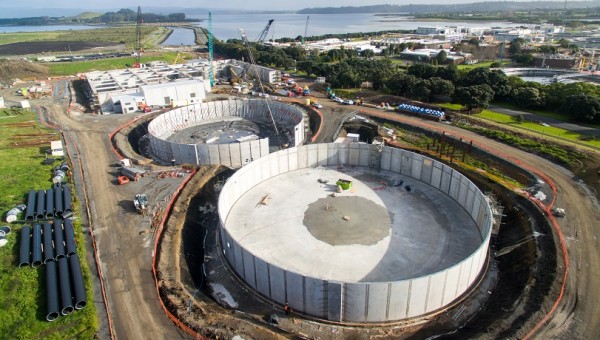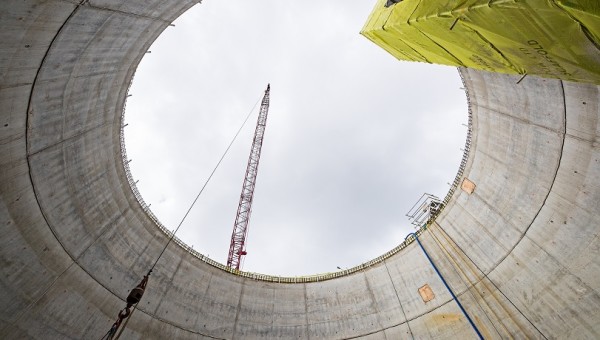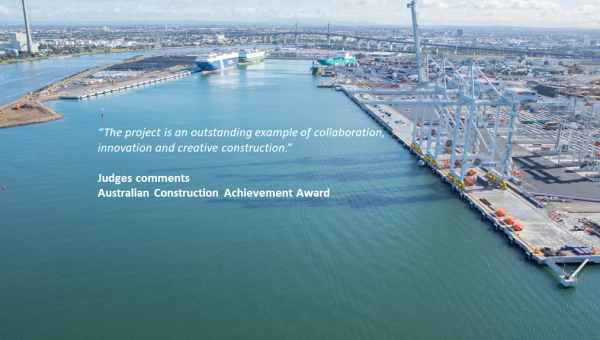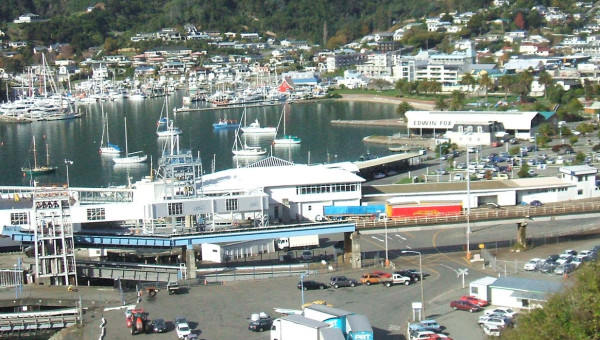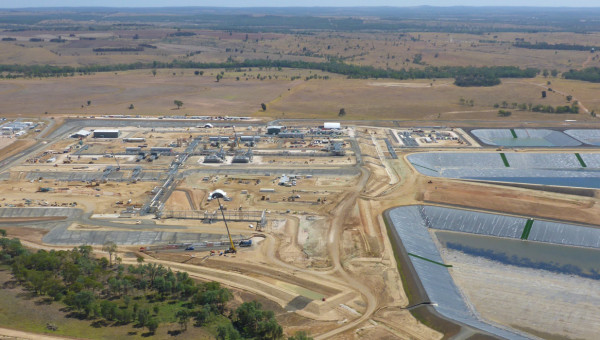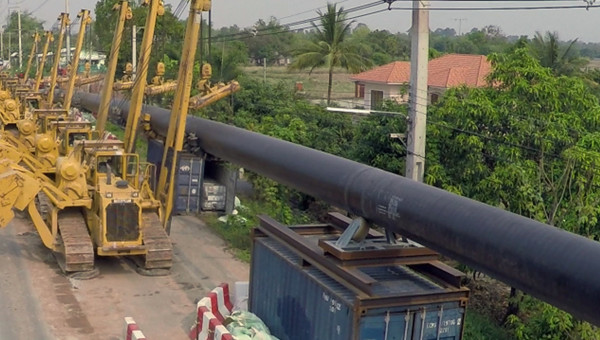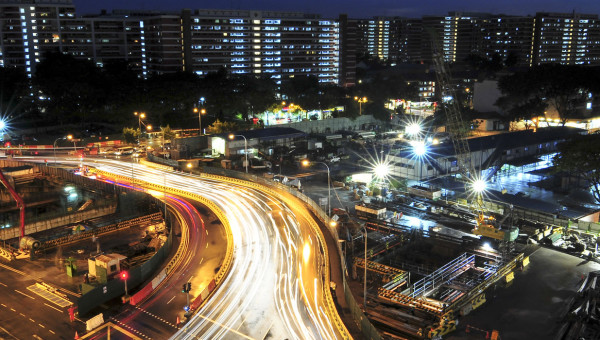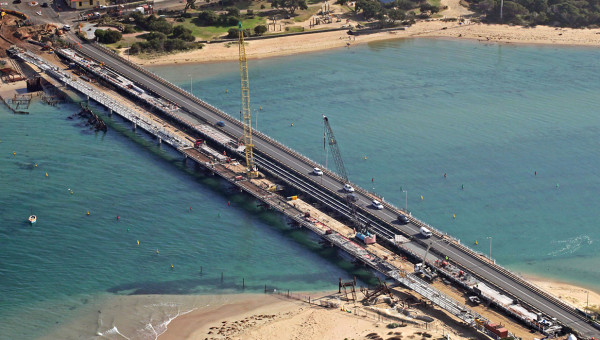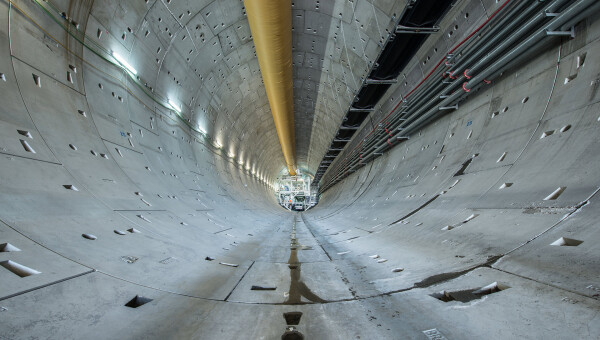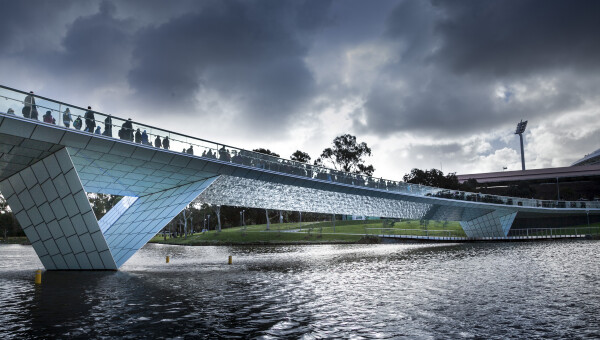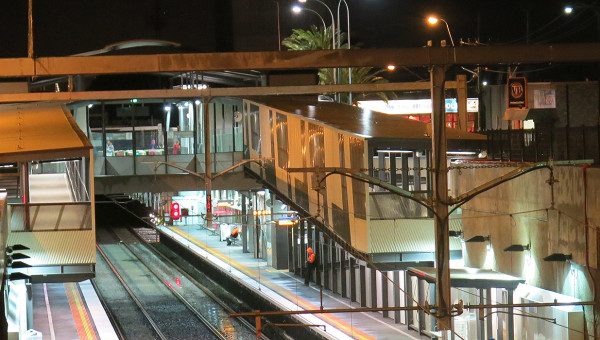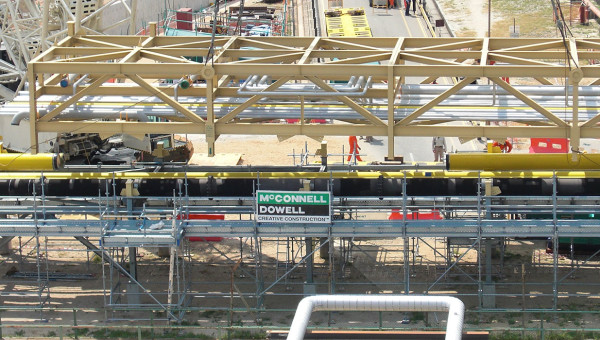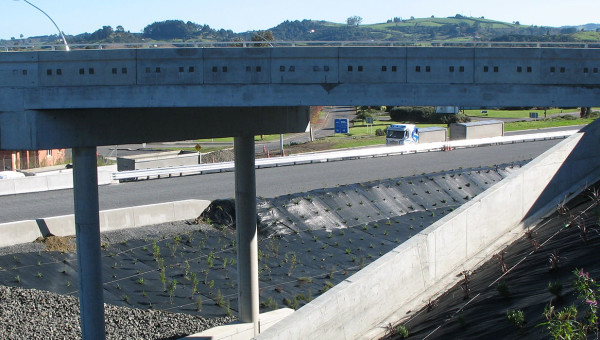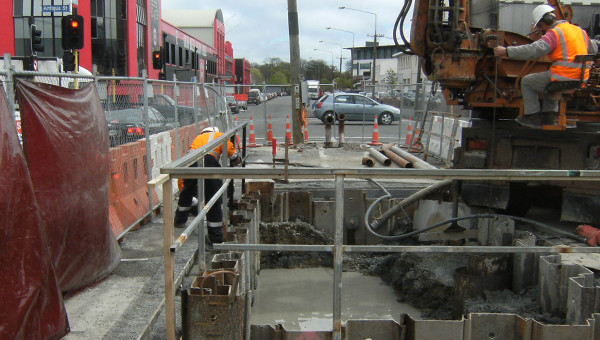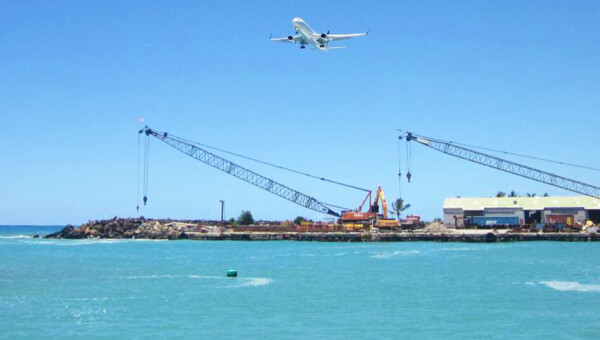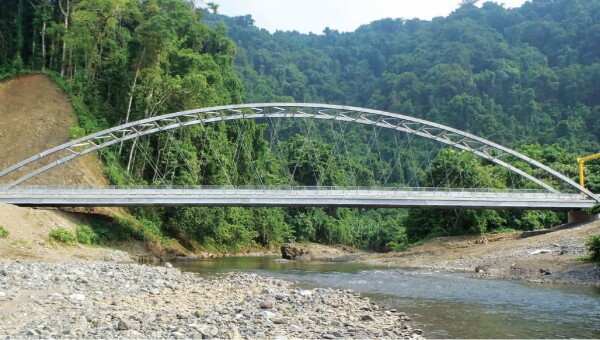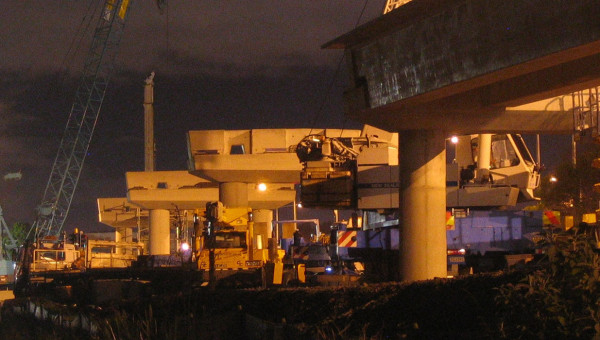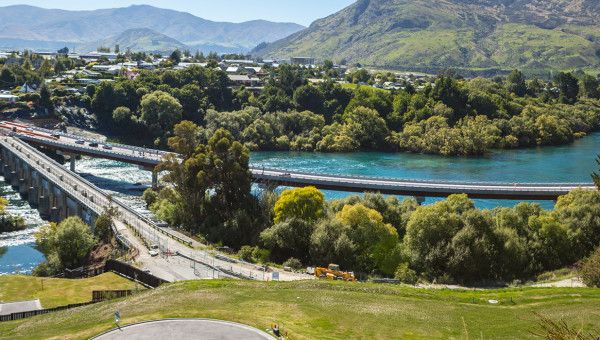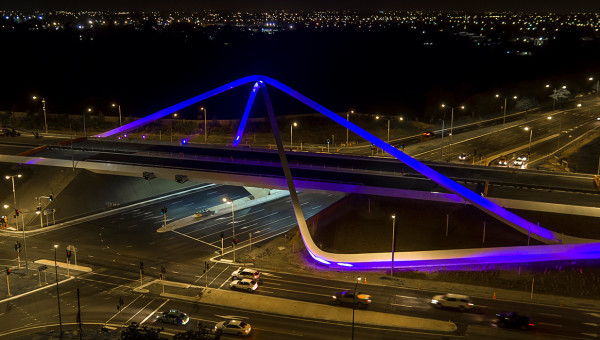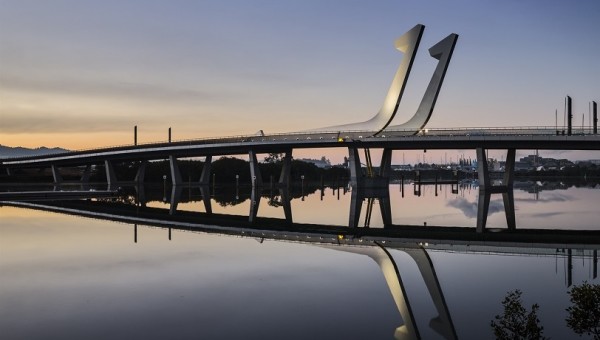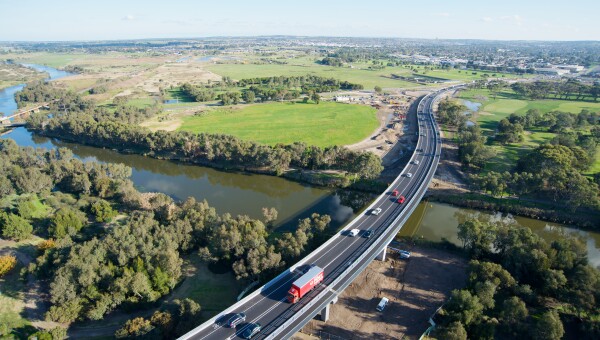|
Customer: Department of Port Administration, Contract: Construct Location: American Samoa {capabilities} |
Fast Facts:
|
McConnell Dowell’s American Samoa branch was awarded the contract to resurface and rehabilitate the asphalt pavement on the primary runway at Pago Pago International Airport in mid-2023.
This is the ninth project McConnell Dowell has been awarded for the Pago Pago International Airport. The most recent were the successful completion of Stage One of Runway 5-23 in 2018 when 915m (3,000 feet) of the runway was upgraded and the Apron Rehabilitation Project in 2020.
The upgrades will help improve the long-term durability and safety of the runway and have been carefully planned and coordinated with airlines, airport users, and the FAA to minimise any disruption.
Work includes the removal of old pavement, paint marking, relocating the segmented circle and lighted wind cone, electrical works, and the extension of the security perimeter fence.
Our purpose is to Provide a Better Life for the communities we work in and we will recycle old millings from the upgrade to reduce the amount of waste going to landfill, and the carbon footprint of the project. The old pavement is removed, crushed, and then reused as aggregate in the base course, a more efficient and cost-effective solution.
The team has 16 years of experience working at the airport and manages quality throughout the supply chain from quarry, to batching plant, to installation.
The on-island asphalt batching facility which produces asphalt for the airport project. was set up in 2005 and can produce 800 tonnes of asphalt a day with a total capacity of 120 tonnes.
Specialist equipment such as the Material Transfer Vehicle (MTV), will be used on the project. The MTV will feed asphalt steadily from truck to paver. This consistent supply of materials improves the quality of the pavement installation and the resulting surface. The MTV process ensures a uniform runway and a smooth ride for the customer.
The upgrades are being funded by the US Federal Aviation Administration (FAA) as part of the ‘Airport Improvements Programme and will help improve the long-term durability and safety of the runway. Work was carefully planned and coordinated with airlines, airport users, and the FAA to minimise disruption.
Construction began in October 2023, and is expected to be completed in November 2024.
|
Customer: Civil Highway Division, American Samoan Department of Public Works Contract: Construct Location: American Samoa {capabilities} |
Fast Facts:
|
McConnell Dowell was awarded the Siliaga Project in late 2022 and construction began in October of the same year. The scope of work spanned three different locations and was completed in under a year by a workforce that included an all-female pavement crew.
Thanks to the hard work and good planning by Project Manager Timani Samau, Project Engineer Loloane Auala, Cadet Engineer Tofaaiga Tuala and Superintendent Fernando Navarro the project was delivered efficiently and effectively with minimum disruption to stakeholders.
Siliaga Elementary School, Aoloau
Most of the project was construction carried out at the elementary school which included building a new paved access road. The Earthwork team led by Supervisor Apelu Leleai, the Concreting team led by Supervisor, Ataita Aneki, and Asphalting team led by Robert Faroden completed these works. As well as making access to the school much easier and safer the team also constructed a new car park complete with line-marked spaces for teachers and visitors, a new sidewalk, and a nib wall.
A section of Aoloau’s main road was also upgraded and the stormwater drainage systems were cleaned out. This work involved milling the old asphalt concrete, laying a new asphalt surface as well as laying new sidewalk, curb and channel, nib walls, and driveway access.
Where possible the team used milling materials to replace about 1530 cubic metres of basecourse which was a cost-effective option and reduced the amount of material going to waste.
Mapusaga
The team milled and resurfaced the main road with asphalt and installed new concrete swales in sections. Work extended onto Access Roads, 2, 3, and 4 where new roads were formed including grading and laying subgrade, compacting the base course and laying a new 50mm thick asphalt surface. Along Access Road 4 the team carried out drainage improvements installing 2 catch basins with two 305mm diameter pipelines. Four manholes were also constructed with 152m of 610mm diameter HDPE to transfer stormwater from the main road into a nearby creek.
A new 915mm wide concrete swale was constructed along the hillside of the road to collect and drain access surface stormwater.
Tafeta
On one side of the main road in this area, the team has constructed new curb and channel, improving drainage at a critical section of the road. New sections of concrete swale were also installed to match and connect the existing drainage. The team also milled and overlaid a section of the road with new asphalt pavement.
The weather was a challenge for the team with heavy rain and high winds preventing work. Now the new roading and drainage has been installed drivers won't be impeded by flooded roads and poor weather making life safer for locals.
The new access road will make getting to and from school a lot easier and safer for children and parents in winter. The wider community will also benefit from the roading and drainage improvements which will help make the roads drier and therefore safer after rain. Old potholes have been removed, filled and new asphalt so water won't pool on the road the new drainage will transfer water from roadside swales into pipelines and away into streams.
|
Customer: Eke Panuku Contract: Construct only Location: Wynyard Quarter, Auckland, New Zealand {capabilities} |
Scope
|
The cement silos in Wynyard Quarter are a striking feature of downtown Auckland’s skyline. They were originally erected by A & G Price in 1961 and were upgraded and repurposed as part of a project to revitalise the area for the Rugby World Cup in 2011.
McConnell Dowell’s Mechanical Team was awarded the contract to urgently repair this heritage structure to ensure the 33m high silos remain a prominent feature at Silo Park for years to come.
Highlights included:
- The urgent nature of work required fast but effective management
- A custom scaffolding design
- Working at heights – 33m high in high winds and heavy rain
- Strict controls to ensure public safety
- Coordinating work around ongoing exhibitions within the building
The team was asked to look into the cause of the cladding failure and the conclusion was that the residential polycarbonate coating wasn't robust enough so the team recommended switching to a commercial-grade gel-coated GRP product. The materials used in the rehabilitation works were chosen for their longevity and high quality and the cladding colour was selected to match the colour of the concrete to help blend the new work with the existing.
Designing and installing suitable access to reach the full height of the silos at 33m was the first challenge the team resolved. An innovative scaffolding design with a custom anchoring system enabled the team to reach all areas.
When you are working at heights adverse weather conditions compound the challenges. On this project, the scaffolding needed to be able to withstand the high wind loads as well as provide protection for the team from heavy rain while they were carrying out the remedial works and applying the new concrete cladding. The custom solution was robust and withstood the high winds and heavy rains over the winter.
The silos are used as a gallery space to exhibit art to the public and the best way to manage the safety risk was to programme work around the gallery operations. We coordinated with the client and stakeholders to plan works that mitigated risk to the public and minimised any impact on the exhibitions.
The silos are surrounded by a public park so the team also needed to be mindful of the people using the spaces nearby. The team calculated the space required for effective safety mitigations carefully reducing the site footprint where possible, which minimised the disruption to the park users as much as possible. Secure fencing and clear signage also communicated the work underway and helped keep park users safe.
The newly upgraded silos are now fit for purpose and will remain a feature of the Auckland skyline for years to come.
|
Customer: Department for Infrastructure and Transport (DIT) Contract: Construct only Location: Port Adelaide, SA {capabilities} |
Fast Facts
|
The Public Transport Projects (PTP) Alliance comprising of McConnell Dowell, Arup and Mott MacDonald, together with the Department for Infrastructure and Transport are currently delivering the Port Dock Railway Line Project, a project that will support 100 full time equivalent jobs per year over the life of the construction period.
The project includes the re-establishment of the spur line and construction of a new train station and bus exchange.
Specifically, the project will deliver:
- A 1km rail line linking Port Adelaide’s commercial centre and residential precinct to the Adelaide CBD
- A new railway station and plaza at Baker Street
- A bus interchange at the existing Lipson Street car park which includes 94 parking spaces, including four accessible parking spaces
- Landscaping around the station, plaza and along the rail corridor to offset the vegetation removed and enhance local amenities.
Other benefits of the project include:
- Upgrades to Barlow Street and Baker Street streetscapes for improved pedestrian and cyclist access.
- Connectivity upgrades to pedestrian and cyclist access alongside Grand Junction Road.
- Overall improvements to pedestrian and cyclist connectivity.
Once complete the project will provide integrated rail and bus services, serve as an important destination for the local tourist attractions and contribute significantly towards the ongoing renewal of the Port Adelaide precinct.
The project is due to be completed with the new railway line and station opening at the end of 2024.
For more information check out DIT's animations below!
DIT animation of the works:
DIT Animated fly-through of the works:
|
Customer: Laidlaw College Contract: Design and construct Location: Henderson, Auckland, New Zealand {capabilities} |
Scope
|
The Mechanical Division was contracted by Laidlaw College to work with their structural engineering consultant EQStuc to complete a significant refurbishment of an existing building into a new Student Learning Centre.
The historic building is five stories tall so a seismic retrofit to comply with the Auckland Council earthquake code, was always going to be a challenge.
The solution the engineers and Mechanical came up with was to install independent structural support at each story to strengthen the entire building and meet the code.
We were responsible for removing existing steelwork and replacing it with upgraded steel to improve the seismic bearing capability. The project scope included fabrication, welding, coating, and the onsite installation of seismic components such as shear brackets, over 2500 epoxied anchors, under-stair beams, and reinforcing structural beams.
Quality
Ferro and laser scanning techniques were used to identify existing services in the building, to relocate them efficiently where required, and to ensure the precise placement of reinforcements.
To enhance the building’s seismic resilience, we also built seismic filling set washers, significantly improving the strength of connections. Other work including pre-camber jacking work and conducting quality (direct tension pull testing) on installed anchors.
Reducing impacts
The steel work was installed on the underside of the ceilings and would be exposed, so it was important the welds were tidy with seamless cross-overs in the finished product. During the initial installation phase, we also planned and managed the work around some of the floors that were still occupied by the Council.


